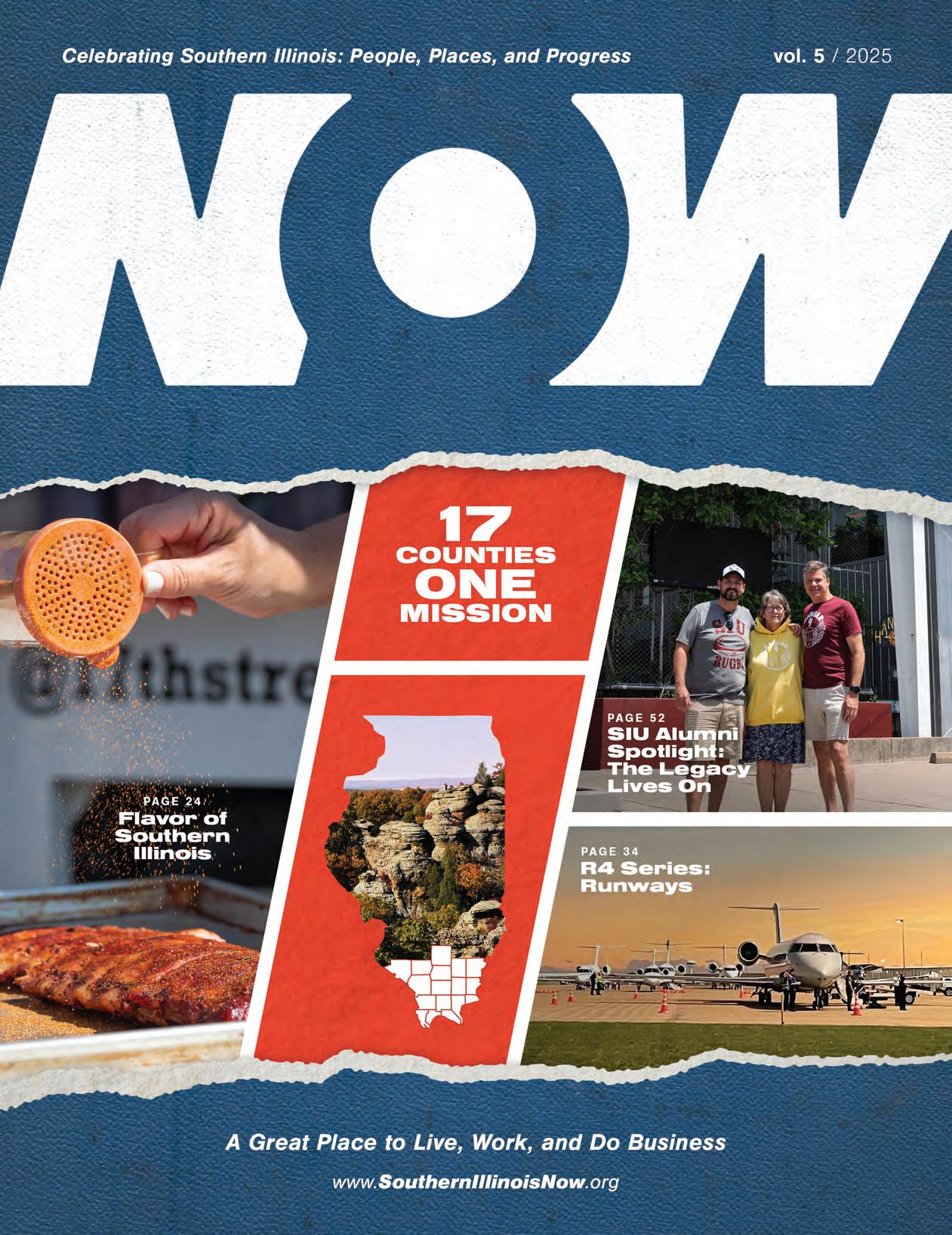
Commitment is about connection, working together for a purpose.
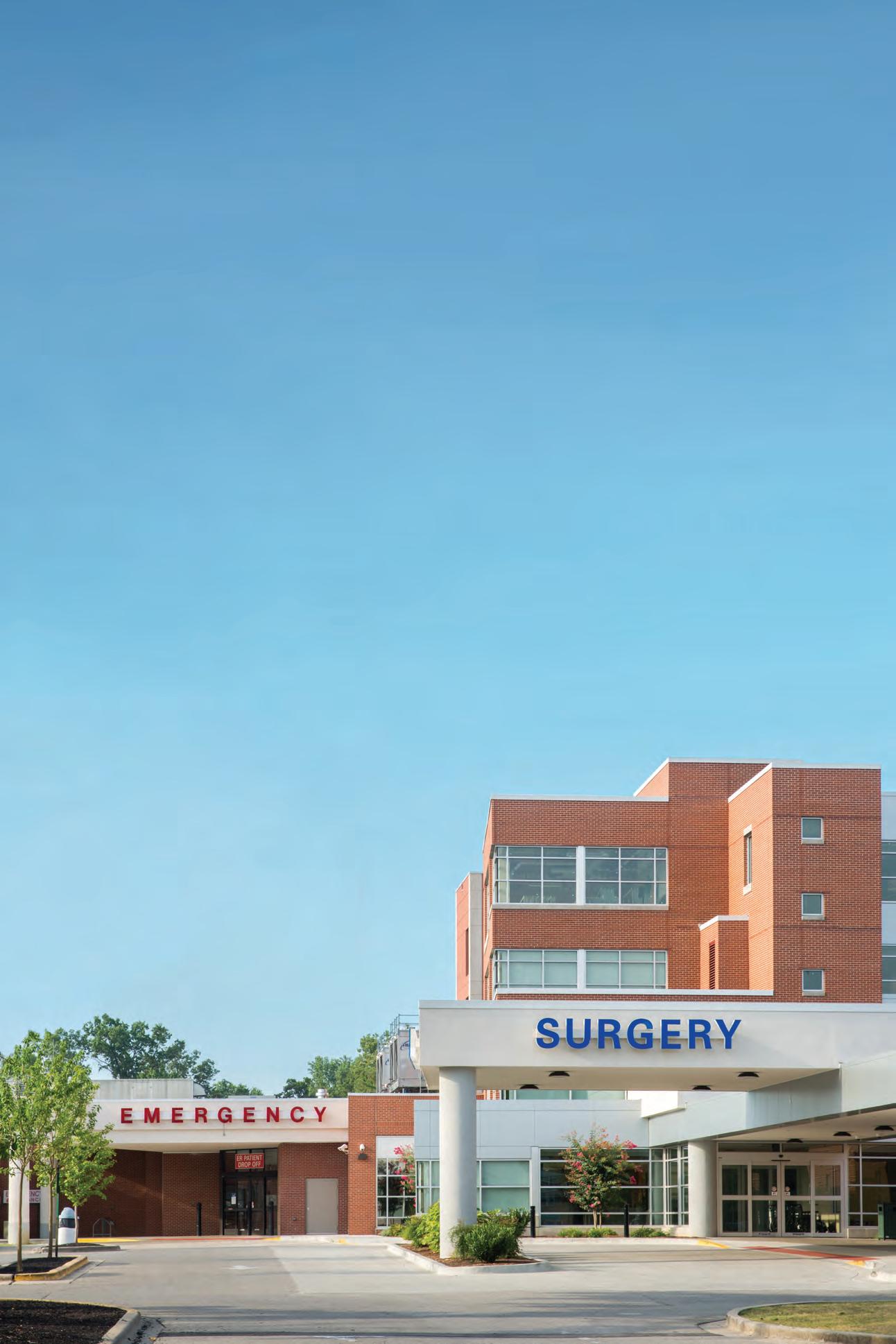
As the most comprehensive healthcare system in Southern Illinois, we take pride in offering advanced care to everyone in the communities we serve. We’re committed to you.



Commitment is about connection, working together for a purpose.

As the most comprehensive healthcare system in Southern Illinois, we take pride in offering advanced care to everyone in the communities we serve. We’re committed to you.









Banterra, one of the nation’s largest community banks, is proudly based in Southern Illinois and is celebrating our 50th anniversary of helping our customers and communities to thrive.


We began as a small-town bank in Ridgway, Illinois in 1975. Today, we have locations in six states, from small towns to large cities like Scottsdale, St. Louis and Salt Lake City. We have more than 500 team members and 40+ branches, with 25 of those around almost every curve in Southern Illinoisfrom Mt. Vernon to Metropolis.
With $3 billion in assets, a lending capacity of $80 million, and vast experience with commercial and specialty lending, we’re proud to support economic development throughout our footprint and particularly in the region we call home. Our local team is dedicated to serving our customers, and we offer products and digital services that would have been a dream in the era when we began.
Let us show you what 50 years of success looks like. Contact Banterra today to learn more about our financial services and business that will never go out of style.
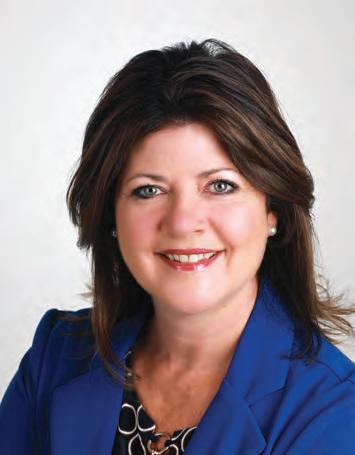
his is a season of big wins and major milestones for Southern Illinois. Across the region, new industries are taking root, businesses large and small are expanding, and once-quiet main streets are alive with fresh energy. Our airports are opening new doors to the world, our creative economy is drawing national attention, and transformative projects in housing, manufacturing, and tourism are reshaping the landscape. The momentum is real—and it’s only growing.
In this Fall 2025 issue of NOW! Magazine, we celebrate a region on the rise. You’ll meet filmmakers, photographers, and entrepreneurs who are turning small-town streets into national stages. You’ll discover food and beverage innovators whose flavors are fueling jobs and tourism. And you’ll see how our multi-modal R4 Advantage (runways, roads, rivers, and rails) is connecting local vision to global markets.
Workforce development takes center stage as we spotlight schools, colleges, and training programs aligning talent with tomorrow’s industries . From high school CEO programs igniting entrepreneurial spirit to community colleges expanding career pathways, Southern Illinois is proving that talent grows best in communities that invest in their people.
We’re also entering an unprecedented season of growth. New investments in aviation, manufacturing, housing, and sports tourism are taking shape. From airport expansions that connect us to the world, to innovative housing initiatives revitalizing neighborhoods, to Main Street transformations breathing new life into our towns—every corner of the region is buzzing with possibility.
At the same time, Southern Illinois Now (SI Now) is actively positioning the region as a prime destination for business relocations and expansions by focusing on site readiness to accelerate development, reduce risks, and lower costs. SI Now has identified and enhanced key industrial sites, secured “Vetted” status for top properties, and launched marketing efforts to showcase infrastructure and logistics advantages, positioning Southern Illinois as a competitive, investment-ready destination.
This issue also honors milestones that remind us of the power of staying rooted while reaching forward: Ferrell Hospital’s century of care, Banterra Bank’s 50 years of service, and the Shawnee Hills Wine Trail’s three decades of award-winning hospitality are a few of many.
And for the first time ever, the region’s port districts all ranked among the Top 150 U.S. Ports in the country, further emphasizing the significant role our inland waterways play in driving economic growth and job creation. With support from our region’s port districts and local county boards, additional opportunities exist for federal Port Statistical Area (PSA) designation that would likely rank Southern Illinois’ collective annual port tonnage at 5th in the country. That’s huge! More to come.
As you turn these pages, I invite you to see Southern Illinois through the lens of possibility. Partner with us, champion your community, and join the movement to build an economy—and a future—that reflects the best of who we are.
Together, we’re shaping a region where a win for one is a win for all.
Deb Barnett, Ph.D. Executive Director, Southern Illinois Now

Where it all began – from vision to impact.
Regional initiatives are not new in Southern Illinois. The region’s history and successes resulted from strong relationships and strategic collaborations. In fact, as part of the initial conversations about the need for a regional organization like SI Now, stakeholders conducted an assessment resulting in a business case titled Guiding Economic Transformation to Sustained Prosperity available at https://southernillinoisnow.org/about/
A deep dive into the history of regional initiatives resulted in a number of successes including SI EDGE (1994) to bring growth and expansion to Southern Illinois, and ConnectSI (2006-2013) focused on advancing Southern Illinois’ broadband access. Key takeaways were documented as a way of building on successes and learning from barriers.
In 2017, the need for a regional marketing strategy was identified. This work later became the SI Works initiative with partnerships from Greater Egypt Regional Planning and Development Commission, Man-Tra-Con, the Southern Illinois Workforce Development Board, the U.S. Economic Development Administration, and the Delta Regional Authority.
At the same time, Southern Illinois University Carbondale (SIU) Chancellor Dr. Carlo Montemagno recognized the need to further strengthen the critical symbiotic relationship between SIU and the region. As a result, in August 2017, Montemagno established the Business Leaders
“ “
As a region, we are better together and a win for one is a win for all of Southern Illinois.
Roundtable and brought together twenty business owners, economic development professionals, regional elected officials, and SIU leaders to identify both key issues affecting SIU and impediments to regional and individual business growth.
Following Dr. Montemagno’s untimely passing in 2018, Southern Illinois Healthcare (SIH) recognized the importance of building upon the Roundtable’s momentum and brought together these leaders, as well as others from throughout Southern Illinois to launch the Bridge to the Future initiative. SI Bridge to the Future was created in 2018 as a regional leadership group consisting of business leaders, community leaders, elected officials, and others to create regional growth and retention strategies through real-world solutions for the southernmost counties of Illinois. These leaders were successful in creating a platform for regional collaborative economic development and laying out a foundation and vision for the success of our region.
Today, SI Now is directed by a stellar Board of Trustees driven by regional leaders representing business and industry, educa tion, healthcare, and workforce. In addition, the organization is led by a talented team of professionals with a passion for the region’s growth and aligned with a vast network of partners

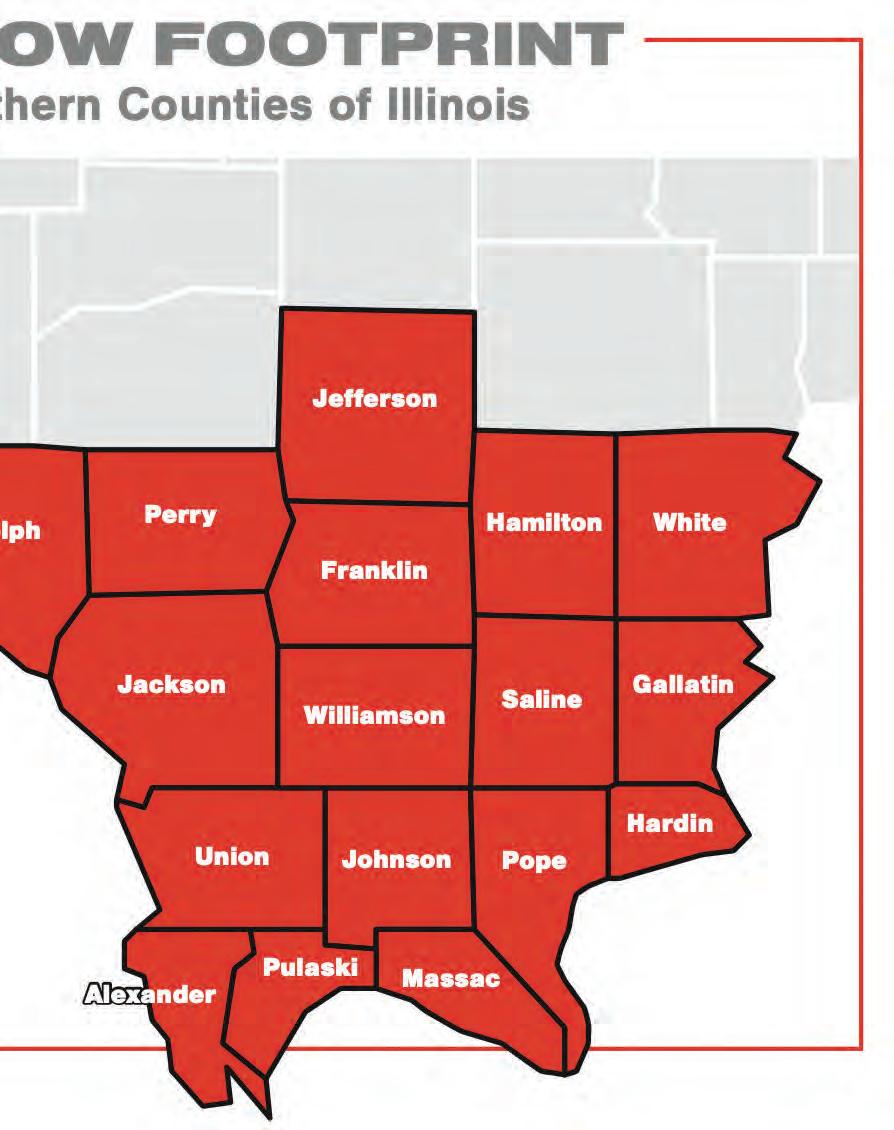
throughout Southern Illinois who work collaboratively to accomplish the region’s goals while not duplicating efforts.
SI Now further unites the region and its collective voice through three task forces designed to support its priority focus areas of business growth and development, education, and workforce development, and marketing the region. As a result, the organization benefits from the expertise and diverse perspectives of nearly 100 of the region’s business and economic development leaders.

In the short time since its November 2022 launch, SI Now has earned the trust and respect of colleagues throughout the 17-county region and the State of Illinois. In 2024, SI Now received two highly esteemed awards of excellence from the International Economic Development Council (IEDC), the largest organization of its kind. The awards highlighted SI Now’s excellence in regional partnerships and telling the region’s collective story through this magazine – NOW!

From the start, SI Now has been envisioned and supported by the Southern Illinois business community. Our business leaders understand the collective impact that occurs when a region pulls together to advance a common goal – in this case, the economic future of Southern Illinois. Early partners came together to invest in the idea of a regional economic development organization even before Southern Illinois Now officially had its name. As a result, SI Now began accomplishing the goals its board members and partners envisioned, even in its early foundational years.
SI Now has established itself as a respected economic development organization locally, statewide, and even nationally with its awards and recognitions. The organization fields dozens of new business inquiries every year with the goal of finding a home for those companies and associated jobs right here in Southern Illinois. At the same time, the SI Now team works with partners throughout the region to ensure that our existing businesses are strong, growing, and have the workforce needed to succeed. Finally, with the support of its partners, SI Now has elevated the region’s visibility through a strategic marketing strategy designed to boost regional pride while placing Southern Illinois on the radar of key decision makers worldwide.
In 2025, SI Now launched a comprehensive, all-inclusive partner program in response to more Southern Illinois businesses inquiring about how they can be part of the region’s growth story. Depending on participation level, SI Now Partners not only invest in the future of Southern Illinois but receive additional benefits including:
• Partner-Only Event Invitation
• Sponsor Mention and Logo at SI Now Partner Events
• Linked Logo on SI Now’s Website
• NOW! Magazine Partner Page Recognition
• Social Media Recognition on SI Now’s Pages
• NOW! Magazine Reserved Ad Space
To inquire about SI Now’s partner opportunities, contact Executive Director Deb Barnett at director@southernillinoisnow.org, call 618353-0100, or reach out to an SI Now Board Member. We invite you to become a partner in advancing the Southern Illinois region and building a strong economic future for generations to come.
SI Now is the regional economic development hub promoting the 17 southernmost Illinois counties as a great place to live, work, and do business. We’re uniquely positioned in Southern Illinois – geographically in the middle of the country with a skilled workforce, low cost of living and high quality of life – the perfect place to relocate or start a business. We connect interested companies and people with opportunities and resources.
KEVIN BECKEMEYER President and CEO Legence Bank
RODNEY CABANESS Co-Owner Oasis Outdoors
JOHN DOSIER President and CEO First Southern Bank
STEVE FALAT
General Manager, Market Manager River Radio
DALE FOWLER
State Senator Illinois 59th District
TONY IRITI Senior Advisor Jefferson County Development Corporation

DEBORAH BARNETT, Ph.D. Executive Director
AUSTIN LANE Chancellor Southern Illinois University
LYNN ANDERSEN LINDBERG Executive Director Southern Illinois University Research Park
KATHY LIVELY CEO (Retired) Man-Tra-Con Corporation
ROBERT J. MAY President and CEO Banterra Bank
CARY MINNIS Executive Director Greater Egypt Regional Planning & Development Commission
MIKE MONCHINO Principal Member Monchino Management
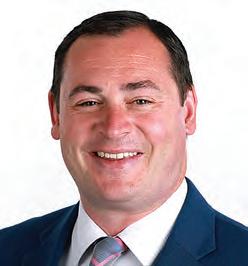
NICK HOLDINGHAUSEN Regional Development & Marketing
WILL STEPHENS
Mayor City of Murphysboro
WOODY THORNE
Chief Development Executive - Community Affairs
Southern Illinois Healthcare
MICHAEL
TISON
Financial Advisor, Managing Director Align Wealth Management
TOM WELGE President Gilster-Mary Lee
PATRICK
WINDHORST
State Representative Illinois 118th District & Board President of One Shawnee

TRICIA EDWARDS Administrative Assistant


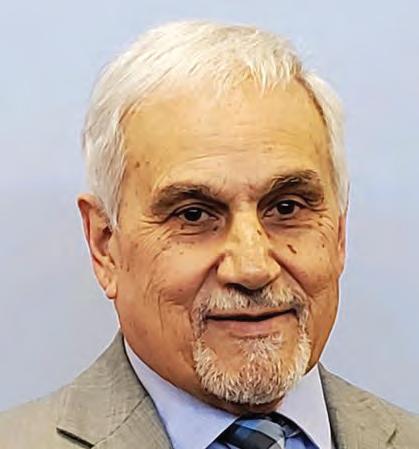

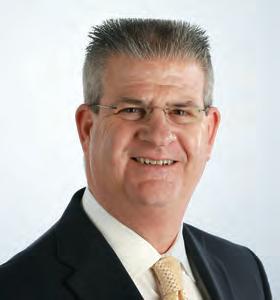
SI Now serves as a regional economic development hub and unified voice for the 17 southern counties of Illinois to advance our region as a great place to live, work, and do business.

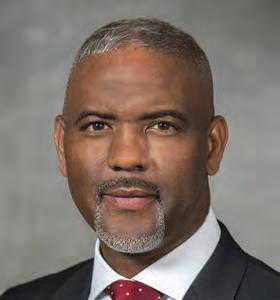



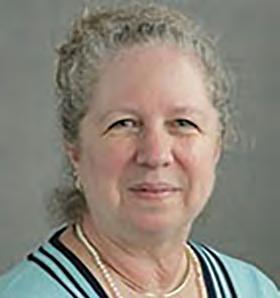
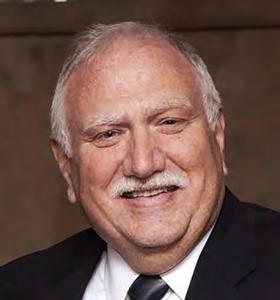

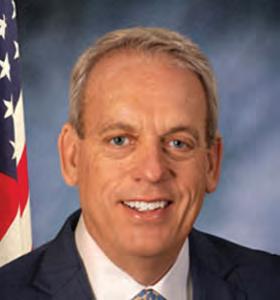

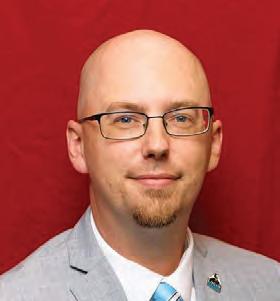

Recently, the SI Now staff took part in the Why SI features highlighted on the SI Now website. These stories celebrate the passion, innovation, and community spirit that make Southern Illinois a unique place to live, work, and grow. Knowing that readers might enjoy a behind-the-scenes glimpse, the team shared their own experiences and perspectives on what makes Southern Illinois truly special.

Southern Illinois has always been my home. Born and raised here, I have a deep-rooted passion for seeing this region grow and thrive. It’s not just my home; it’s the home of friends, family, and neighbors whom I care deeply about. After nearly 30 years in business, education, ministry, and higher education, the opportunity to engage in regional work through Southern Illinois Now (SI Now) is a dream come true. This role combines my life’s work and experiences, allowing me to advance the region I call home and fulfill my personal mission in a whole new way.
My journey towards defining my personal mission or purpose began in 2019 when I participated in the Delta Leadership Institute Executive Academy. In 2022, I had the unique opportunity to further my delta leadership learning through the Harvard Kennedy School of Government’s authentic leadership program. As part of this study, we were challenged to develop a personal mission statement that transcends any specific position or career goal, speaking to who we are at our core and what our true north is.
I discovered that my personal mission or purpose statement is: “To serve as a mirror to reflect back to others their God-given gifts and talents so that, in doing so, they realize their own purpose.” Encouraging others and seeing the very best in them comes naturally to me; it’s like breathing air. What I didn’t realize at the time was how highly relevant this mission statement would be to my work at SI Now.
At SI Now, I have an opportunity to reflect back the gifts and talents of the people throughout the region - and those gifts and talents abound. Additionally, I have the privilege of highlighting the unique assets of each and every community in Southern Illinois. For me, it’s easy to see the assets that surround us, no matter how large or small a community is. Being able to serve as a mirror to reflect back to city leaders or community members the uniqueness and assets of their community so that they may see their own purpose in creating its future is an absolute dream come true.
Southern Illinois has unlimited potential. Through SI Now, I get to reflect back that potential not only to fellow Southern Illinoisans but also to others throughout the state, the country, and the world who are discovering Southern Illinois for the very first time. This region is rich with opportunities, and I am honored to play a role in its advancement.
Southern Illinois is more than just a place; it’s a community filled with potential and promise. My work at SI Now allows me to combine my life’s experiences and personal mission to help this region thrive. I am excited to continue reflecting the gifts, talents, and unique qualities of Southern Illinois to the world.

Ifirst moved to Southern Illinois nearly 15 years ago for an opportunity to work as a broadcast meteorologist. As a recent college graduate, it was a bold step to relocate to a region where I had spent little time. Still, I was grateful for the chance to begin my career just two hours from my hometown, and to learn alongside an experienced mentor in the field. What I didn’t realize then was that this move would become one of the most meaningful decisions of my life—leading me to meet my wife, form lasting friendships, and build a deep connection to a community that has truly become home.
When I transitioned from television to a role in economic development, I wasn’t entirely sure what each day would hold—but I knew with certainty that I wanted to contribute to the growth and vitality of Southern Illinois. Through my work with Southern Illinois Now (SI Now), I have the privilege of engaging directly with communities across the region— learning about their triumphs, understanding their challenges, and helping shape a shared vision for sustainable progress.
This role allows me to be part of something bigger than myself. It offers a tangible way to help build the kind of future I want not only for my two daughters, but for every family in Southern Illinois. With its low crime rates, affordable cost of living, and access to highquality schools and amenities often found in larger cities, this region offers an incredible quality of life. A typical summer Saturday might include gymnastics or swim practice, a bike ride with the kids, and ending the day sharing stories and laughter with neighbors in the driveway. It’s a lifestyle rooted in community, simplicity, and connection—values I deeply cherish.
Looking ahead, I’m especially excited by the growing momentum around revitalizing our downtowns and Main Streets. Across Southern Illinois, there’s a renewed energy and commitment to restoring these spaces—not just as economic centers, but as welcoming places where people can gather, connect, and celebrate local identity. More and more, I meet individuals who share a passion for their hometowns and a drive to see them flourish once again. That spirit— that sense of possibility and pride—isn’t just the future of Southern Illinois. It’s what defines us today.

If you asked me in person “Why SI,” I’d simply say…my husband. That’s the beginning of my why
Picture this: a Southern Illinois “small town” guy meets a Mississippi “big city” gal while attending college. Fast forward through years of marriage, multiple moves, and a couple of kids—and that small-town guy plants me right in the heart of Southern Illinois.
Now, we’d visited his family plenty over the years, but when we made the move, I remember looking around and asking, “Where exactly are you taking me?” At the time, Marion didn’t even have Super Walmart. Coming from a city that had EVERYTHING, I’ll admit—I was in a bit of shock.
But 21 years later, and with another kiddo born at Memorial Hospital in Carbondale, Southern Illinois is home
For a long time, I heard the same narrative over and over: “There’s nothing here,” or “Why would anyone want to move to Southern Illinois?” And honestly, I started to believe it myself… until I applied for a position and started working at SI Now. That’s when everything changed.
Through this incredible opportunity, I’ve met so many passionate changemakers – people who pour their time, talent, and heart into building up this region. If you heard me now talking about everything Southern Illinois has to offer, you might not recognize the skeptical woman who first arrived here all those years ago. Now, when I hear that old narrative of “there’s nothing here,” I can’t help but smile— and respond with a long list of reasons why that couldn’t be further from the truth.
From cheering on the local growth to enjoying the front-row seat I have to progress in our communities, I can say with confidence— Southern Illinois is full of life, opportunity, and heart. Whether it’s eating at our go-to local restaurants, shopping at charming boutiques (my favorite hobby), exploring the outdoors, or sipping wine at the vineyards that make this region famous, there’s truly something for everyone.
They say perception is reality—and it’s true. When you change your perception, your reality changes, too. And in Southern Illinois, I’ve found a reality I never expected… but wouldn’t trade for anything.
Maybe if folks swapped out “there’s nothing here” for “have you noticed all the good happening around here?” we’d all be a lot happier—and even a little prouder to call Southern Illinois home.
“There is no power for change greater than a community discovering what it cares about.”
– Margaret J. Wheatley
by
FROM F Y24 TO FY25








8 SITE VISI TS

Ameren Illinois is your energy partner who listens to your business requirements to accelerate speed to market, reduce risk and align with your goals. We leverage energy solutions that empower business growth, promoting thriving communities across Illinois. We


Southern Illinois Now (SI Now) is making strides to position the region as a top contender for business relocations and expansions across the Central U.S. At the heart of this effort and in alignment with the State of Illinois’ goals, is a strong focus on site readiness—a proven strategy to provide speed to market, reduce risks, and lower development costs. By proactively preparing industrial properties, SI Now is helping ensure that Southern Illinois competes on a national scale.
In late 2024 and early 2025, SI Now undertook a Top 20 Site Assessment, made possible through a Strategic Planning Grant from the Delta Regional Authority. Working alongside renowned site selection consultants from GLS and Schneider Consulting Group, the initiative involved identifying high-potential sites, evaluating their development readiness, and delivering actionable recommendations to move those sites toward marketability. The outcome was a strategic blueprint that will guide investments and enhancements, putting Southern Illinois on the radar of national and international business decision-makers.
A critical factor in the success of these efforts has been strong partnerships and collaborations between private and public, spanning local and state governments. In Red Bud, the city has secured nearly $2 million in grant funding through the State of Illinois to build out infrastructure such as streets and utilities at a new business park on the south side of town to attract new business while also offering existing businesses a place to grow. In Metropolis, the Illinois Department of Commerce and Economic Opportunity (DCEO) awarded the city a Regional Site Readiness Grant to conduct site due diligence studies, a critical step in eliminating risks for potential businesses looking to locate to the Metropolis Industrial Park.
SI Now is leading the charge, contracting with So Ill Cinema to create high-quality marketing videos featuring drone footage of the region’s top properties, highlighting the robust transportation infrastructure, utility access, and logistical advantages Southern Illinois offers.
Through these coordinated efforts and collaborations, SI Now is elevating Southern Illinois’ visibility, credibility, and competitiveness in the high-stakes world of site selection. The message is clear: the region is ready for investment—and ready to deliver.


https://www.youtube.com/watch?v=Ini4nRrJtMY
Congratulations to 17th Street Barbecue on 40 years!

• Barbecue Capital of Illinois
Home to Nationally Acclaimed 17th Street Barbecue
• 75 Active Downtown Corridor Businesses
• Home to Southern Illinois Airport
• Annual Praise the Lard Murphysboro Barbecue Cook-Off 2024 welcomed 119 teams from 20 states
• Murphysboro Apple Festival Draws 45,000+ visitors annually
• Big Muddy Monster Brew Fest
“I have had such a positive welcome from the City of Murphysboro. I’ve developed over $15 million of business in Murphysboro and the Mayor and City Council have helped me every step of the way. You’ll find a partner to a successful future when you invest in Murphysboro.”
-Joe Koppeis, Admiral Parkway
• Home to the Historic Liberty Theater National Register of Historic Sites
• Home to the General John A. Logan Museum
• Home to Lake Murphysboro and Kinkaid Lake
• St. Patrick’s Day Festival
• Summer Block Parties
• August Summer Concerts
“By capturing the passion, imagination and resources of its residents, Murphysboro is building a better today, and a bright future. Come be a part of our story, in Murphysboro.”
-City of Murphysboro Mayor Will Stephens
Southern Illinois was proud to host the SI Now Business Retention and Expansion (BRE) Training on August 6–7, 2025, in partnership with the International Economic Development Council (IEDC). This dynamic two-day event brought together economic development professionals eager to learn innovative tools and strategies aimed at strengthening their communities’ economic vitality.
The training featured interactive sessions designed to empower participants to identify local business needs, foster strong relationships with key employers, and implement effective retention and expansion initiatives. Attendees gained practical knowledge to enhance their efforts in supporting existing businesses and attracting new investment throughout the region.
The event showcased the region’s dedication to economic development and collaboration, leaving attendees equipped and inspired to make a tangible impact in their communities through a regional BRE strategy.


With strong regional support from local county and port district boards, the Southern Illinois region is pursuing a strategic initiative to strengthen regional port development. On August 8, 2025, SI Now served as a liaison to apply for federal Port Statistical Area (PSA) designation for the Southern Illinois region.
By definition, a PSA is “a region with formally justified shared economic interests and collective reliance on infrastructure related to waterborne movements of commodities that is formally recognized by legislative enactments of state, county, or city governments” (U.S. Department of Transportation). If approved, the PSA will unify reporting to reflect annual regional tonnage and increase visibility of regional waterborne activities with the goal of attracting strategic investments.
According to the most recent U.S. Coastal and Inland Navigation System report, a review of U.S. port performance revealed that, for the first time ever, the Southern Illinois region’s ports all ranked among the Top 150 U.S. Ports in the nation. Collectively, the annual tonnage would likely rank the Southern Illinois region at #5 among the nation’s currently recognized Port Statistical Areas.
The Southern Illinois region is experiencing renewed optimism, collaboration, and growth. Bordered by both the Mississippi and Ohio Rivers with the confluence of the two at our southernmost point, the region’s inland ports are no exception. In addition to the individual port district areas, the creation of a regional statistical boundary driven by shared economic interests and collective infrastructure reliance will help enable rural, regional transportation operations, support regional multi-modal transportation and other infrastructure planning, and provide for regional marketing and investment opportunities with the goal of job creation and economic growth for the region and the state.
The country’s inland waterways are not just transportation hubs, they serve as economic drivers. As a 2025 Top Logistics Hub, Southern Illinois and its R4 Advantage (rivers, rail, roads, runways) relies heavily on its transportation infrastructure and we expect the region’s rivers to play an even bigger role in our economy by amplifying regional momentum and unlocking new opportunities for growth.

80% of all inland barge traffic in the United States passes through Southern Illinois. The Mississippi and Ohio River’s interconnected network allows for the transportation of goods to and from many different regions in the U.S. and links to key ports that provide access to international trade routes.



Frame by Frame: The Creative Pulse of Southern Illinois
Southern Illinois has long served as a quiet haven for artists and storytellers — a region where natural beauty, rich history, and deep-rooted culture come together to inspire bold creative expression. Beyond the traditional stages and gallery walls, this part of the state is experiencing a visual renaissance, one that’s unfolding not with fanfare, but with authenticity, resilience, and vision.
In this next chapter of our Arts & Entertainment series, we delve into the world of film and photography in Southern Illinois — a world where cornfields become sets, abandoned buildings transform into backdrops, and small-town streets offer stories just waiting to be told. Here, creativity isn’t a luxury; it’s a lifeline — a way to capture identity, preserve memory, and imagine new futures.

Across the region, students, professionals, and grassroots creators are crafting a fresh visual narrative that reflects both the grit and grace of this place. Cameras roll not only in formal studios, but in kitchens, forests, alleys, and classrooms. Whether capturing documentary realism or cinematic fiction, these creators are redefining what it means to produce art in rural America.
This section is a tribute to that movement — a celebration of the people and places pushing boundaries, telling honest stories, and proving that the arts don’t just belong in big cities. They thrive here, frame by frame, in the heart of Southern Illinois.
Southern Illinois is building more than just sets—it’s building a workforce.
Thanks to a competitive grant from the Illinois Film Office and the Illinois Department of Commerce and Economic Opportunity, Southern Illinois University Carbondale (SIU) is helping cultivate the region’s next generation of film and television professionals.
Led by Vanessa Sneed, SIU Office of Innovation and Economic Development’s director of business innovation and research; Karla Berry, Associate Professor in the School of Media Arts at SIU; and Nathan Colombo, Founder of Brand Advocacy Group and Carbondale City Council Member; the Southern Illinois Film and TV Workforce Training workshops deliver hands-on training aimed at preparing local talent for careers in film and television production.
Funded through the Illinois Film Office’s Film and TV Workforce Training Program grant, the initiative is designed to grow the state’s behind-the-scenes labor pool throughout Illinois—especially in anticipation of expanded film tax incentives. The university was the first grantee from Southern Illinois, joining a small group of programs primarily based in the Chicago and Northern Illinois areas.
Over the course of the year, the grant supported three intensive workshop cohorts free to participants—who completed 80 hours of instruction in everything from cinematography and lighting to set etiquette and story development. Participants ranged from SIU media arts students to community members looking to pivot into creative careers. Some have already found employment in local media, including WSIL-TV, while others are launching independent projects.
“We’re not training talent to leave,” said Berry. “We’re helping them build a future here.”
Sneed believes that the university “looks for ways to support growing industries in the region and the rich creative culture of Southern Illinois. As a member of the SI NOW Regional Workforce and Education Task Force, it is a unique workforce opportunity for the area.”
With continued backing from SIU and a growing alumni and industry network, Southern Illinois is positioning itself as a film-friendly region where creative professionals can thrive—and stay.
Illinois is one of the top six film and TV production centers in North America. While it is true most production happens in and around Chicago, the Illinois Film Production Tax Credit brings filmmakers to all parts of the Land of Lincoln.
Southern Illinois attracts productions with its diverse locations, and the natural beauty of Shawnee National Forest makes it a favorite among TV commercial producers. The independent feature films Dig Two Graves, and Range Runners filmed entirely in Southern Illinois, and the film I Used To Go Here was set and partially filmed at Southern Illinois University.
In addition to being a location for filming, Southern Illinois University has an outstanding film program, graduating filmmakers, writers and performers such as Steve James (Hoop Dreams, Life Itself), Melissa McCarthy (Bridesmaids, Spy), and Bob Odenkirk (Breaking Bad, Better Call Saul). In 2024-2025, SIU was a partner of the Illinois Film Office’s Film and TV Workforce Training Program, preparing 40 Southern Illinois residents with entry level film skills, and helping place them in paying jobs in the industry.
Local resources for filmmakers include the Southernmost Illinois Tourism bureau https://southernmostillinois.com/ and Film Southern Illinois https://www. facebookcomfilmsouthernillinois/ overseen by location scout, local historian, and filmmaker, Jon Musgrave.
All of this energy around filming in Southern Illinois, and the success of the Illinois Film Production Tax Credit, has spurred development for a film studio campus in Wood River, Illinois. The studio plans to open in the winter of 2027. It will be the first fullfledged film and TV soundstage facility in Southern Illinois.
https://reelchicago.com/article/proposed62m-hollywood-river-studios-aims-toexpand-film-production-downstate/
Peter Hawley, Deputy Director Southern Illinois Film Office


Southern Illinois University’s photojournalism program, led by Assistant Professor Julia Rendleman, is redefining how students engage with their craft—and their community. Through a series of immersive, community-facing projects, Rendleman and her students are using photography to tell authentic stories of Southern Illinois towns and the people who shape them.
One standout initiative is the Carbondale Main Street Dining Guide, a collaboration that began when Matt Collinsworth, director of Carbondale Main Street, reached out to Rendleman. The project aligned perfectly with a course she was teaching and a broader effort already underway with Southernmost Illinois Tourism. Students were tasked with capturing vibrant, client-focused images of local businesses—an exercise that challenged them to think beyond traditional journalism and consider how their work could serve both storytelling and marketing purposes.
“In journalism, we’re not always thinking about whether an image sparks joy,” Rendleman explained. “But in this case, we asked, ‘Would

a business owner be proud to hang this on their wall?’ That shift in perspective was powerful for the students.”
The project not only gave students real-world experience but also paid them for their work—an important step in preparing them for the evolving media landscape. “If I ignored the challenges in journalism today, I’d be doing them a disservice,” Rendleman said. “This gave them a chance to apply their skills in a way that’s both creative and sustainable.”
The Dining Guide is just one of several recent projects. Another is a coffee table book documenting the towns of Cobden and Alto Pass, created during a weekend workshop where students and faculty “took over” the towns for 48 hours of immersive storytelling. Proceeds from the book support future workshops.
Rendleman’s team prepared a tattoo photography exhibit that opened at Carbondale’s municipal building during an inclusive community event in October, coinciding with SIU’s Parents Weekend. The exhibit explored personal stories behind tattoos, adding another layer of depth to the students’ documentary work.
These projects reflect a broader mission: to connect students with the region and empower them to tell stories that matter. “We want to
“We were thrilled to partner with Professor Rendleman and her students from the SIU photography program this spring,” said Matt Collinsworth, executive director of Carbondale Main Street. “We received a grant from Illinois Main Street to produce a dining guide for downtown Carbondale. The students’ work was professional and well composed. They photographed dozens of downtown restaurants, and their work made for a much richer and more attractive document.

highlight the exciting things happening here,” Rendleman said. “And SIU plays a huge role in that.”
As the program continues to grow, so does its impact—on students, on communities, and on the future of visual storytelling in Southern Illinois.
Antonio Martinez, professor in the School of Art and Design at Southern Illinois University Carbondale (SIU), is playing a key role in advancing the creative economy of Southern Illinois. Through his teaching, advocacy, and partnerships, Martinez is helping to redefine how the arts contribute to both community and economic vitality.
“The arts validate and connect people,” says Martinez. “They’re not just an outlet—they’re essential to how we live and grow together.” At SIU, he encourages students to engage with the region through hands-on experi ences in photography, printmaking, digital media, and more.
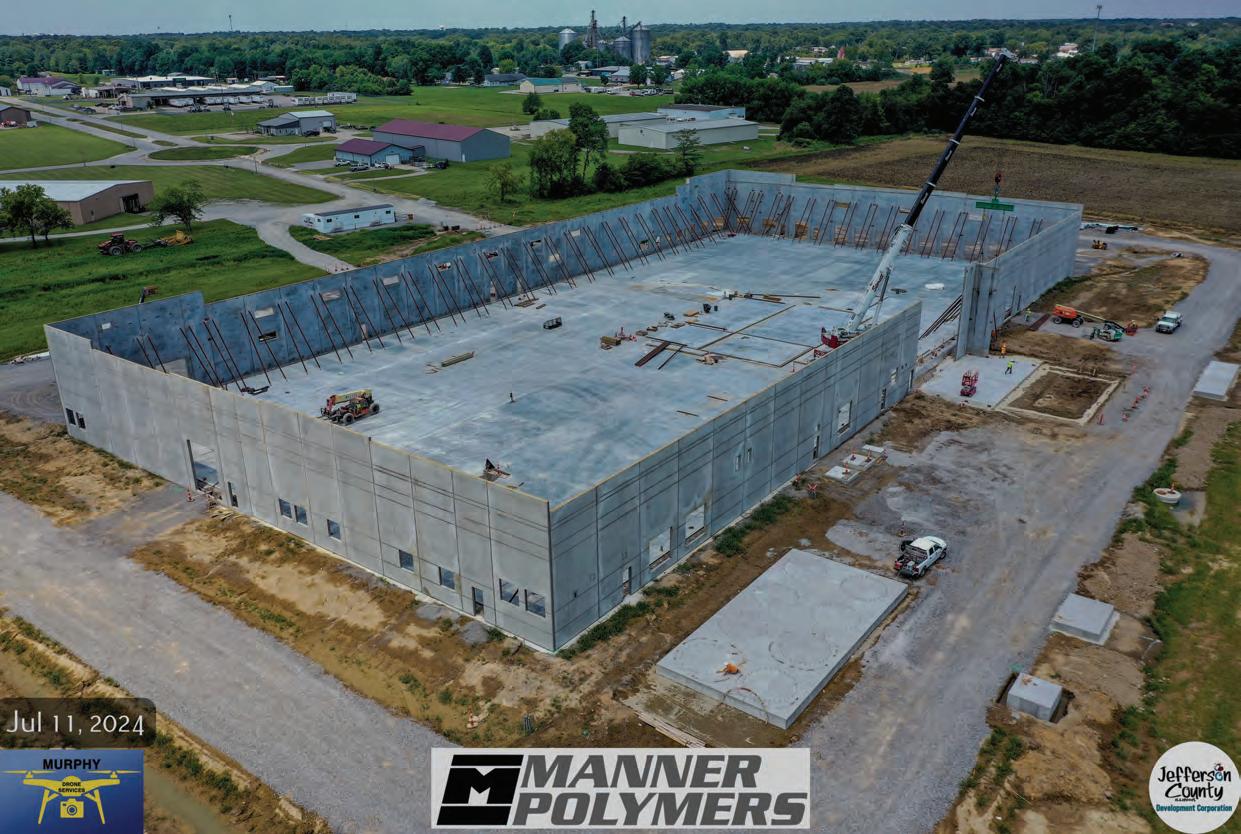
Programs like the Holiday Craft Fair, the Iron Pour, and the glass pumpkin sale offer students real-world exposure while also drawing in community support. Photography students often take on professional assignments— from business shoots to documenting the Du Quoin State Fair—giving them a head start in creative careers. Alumni like Kylen Lunn, now a free lance music photographer in New York, are proof of the program’s reach.
Martinez also champions collaboration with local institutions such as ArtSpace 304, Cedarhurst Center for the Arts, and the Sharp Museum. These partnerships bring exhibitions and workshops to a wider audience, including recent projects like
His broader vision for Southern Illinois? For key stakeholders to under stand and want to expand access to public maker spaces and studio facilities across Southern Illinois, thus making creative work more visible and sustainable. “When you support the arts, you support your entire community,” Martinez says.
From classrooms to galleries, Martinez’s influence is shaping a more vibrant, connected, and expressive region—one where the arts are not just appreciated but deeply integrated into daily life.

Revisit the earlier Visions of Us feature

https://issuu.com/jacksonstreetpublishing/ docs/now-magazine-vol3?fr=xKAE9_zMzMw
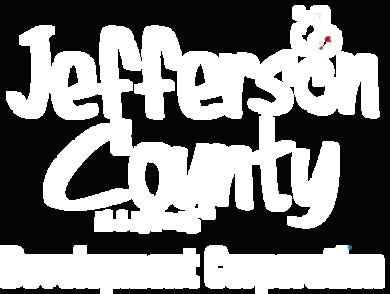







“Shawnee Community College is a model for rural institutions navigating change while maintaining quality and mission integrity.” Higher Learning Commission 2025 model for rural institutions navigating change while maintaining
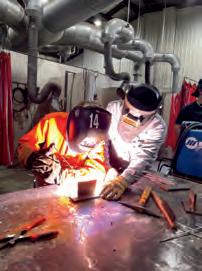



Nestled in the heart of Southern Illinois, in a modest building that doubles as both production studio and creative incubator, Guerrilla Film is quietly reshaping what it means to be a creative powerhouse in the Midwest. Led by Tennyson Tanner (Owner, Director of Photography & Director) and Jonah Atkins (Co-owner, Producer & Director), the two-man team has produced national and international campaigns—all while remaining rooted in their hometown values.
From the outside, Guerrilla Film may not look like a big agency. But step inside, and you’ll find high-end gear, post-production suites, and a team of rotating freelance creatives—many from Southern Illinois. It’s a lean operation with a big reach.
“Our approach is like guerrilla warfare—small, efficient, and resourceful,” says Tanner. “We don’t sacrifice quality, but we don’t waste time or money either. We bring the same polish as a big agency, without the overhead.”
Before it was Guerrilla Film, the company existed under different names—Tennyson Tanner Cinematography, and later, Silo 7 Films. The 2016 rebrand to Guerrilla Film marked a shift toward larger clients and a production model that was agile, scrappy, and smart. The name is a nod to guerrilla warfare, symbolizing the team’s strategy: move quickly, stay adaptable, and make a big impact with a small crew.
While many in their industry gravitate toward the coasts, Tanner and Atkins have made a conscious choice to stay grounded in Southern Illinois. Why? For them, the answer is both personal and practical.
“We’ve been asked to move Guerrilla to bigger cities,” says Atkins, “but our families are here, our church community is here, and the landscape here gives us everything we need.”
Their recent national campaign for STIHL, shot largely in and around Marion, proved exactly that. They transformed local ranches and forests into believable Western backdrops—allowing the client to film a national brand launch without leaving the region. Their crew? Almost entirely local. Their gear? Fully owned. Their execution? Industry standard.
Despite staying close to home, Guerrilla Film’s reach is anything but small. They’ve worked with Subaru, the U.S. Marines, and even Jason Momoa—filming content for an upcoming documentary featuring the Aquaman star.
But big budgets don’t dictate their choices. Tanner and Atkins are deeply committed to their values, often turning down projects that conflict with their faith or family priorities.
“We’d rather be good husbands, dads, and friends than just successful entrepreneurs,” says Tanner. “We believe you can be both—but if we have to choose, our values come first.”



“We want to keep the work here whenever we can,” Tanner says. “It’s about building something that lasts—for our families, our community, and the next generation of storytellers.”

Guerrilla Film doesn’t just work in Southern Illinois—they actively champion it. By leveraging the region’s natural beauty, strong work ethic, and deep talent pool, they’ve helped position the area as a legitimate destination for film and media production.
“We can make Southern Illinois look like California or Utah if we need to,” Atkins says. “And with tax incentives equal to Chicago, there’s real opportunity here.”
The duo dreams of bringing a full-length film or series to life right here at home, casting local talent and showcasing what Southern Illinois has to offer. It’s not just about telling stories—it’s about telling our stories.
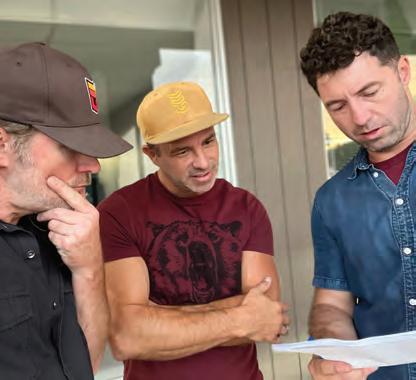
Guerrilla Film has built its business almost entirely through word-of-mouth and personal referrals. In fact, they rarely promote themselves online—letting their work and relationships speak for themselves.
“Most of our best projects came from treating people well,” says Atkins. “Someone moves from Agency A to Agency C, remembers us, and gives us a shot.”
That quiet professionalism has paid off. Whether it’s a five-person crew or a 40-person set, Guerrilla Film can scale up, produce, and deliver with the best in the business.
With a growing number of high-profile projects and a strong desire to invest in their own region, Tanner and Atkins are setting their sights on bringing even more blue-collar and medical clients into their portfolio—areas where they’ve already proven themselves. And while they’ve explored expansion through hiring, they find more value in working with trusted freelance collaborators, especially from Southern Illinois.
Guerrilla Film isn’t chasing the spotlight—they’re building it, one powerful story at a time. From Southern Illinois to international campaigns, they prove that big things can come from small towns—especially when you stay true to your roots.


What began as a simple hobby—flying a drone to capture the natural beauty of Southern Illinois—has evolved into a business that’s helping redefine how people see this unique and often underappreciated region. Far removed from the dazzling lights of Chicago and the flat, corn-filled landscapes of central Illinois, Southern Illinois is a world of its own. Here, ancient sandstone bluffs tower over dense hardwood forests, bald eagles soar overhead, and in the shadowy stillness of the cypress swamps, cottonmouths glide silently through the water with massive catfish lurking below. This rich biodiversity—more reminiscent of the Ozarks and Mississippi Delta—captivated Jared Long, a central Illinois native who found himself drawn to the region’s slower pace, scenic variety, and tight-knit communities. Over time, it didn’t just inspire his creative work—it became home.
With the world shut down during the COVID19 pandemic, Long decided to venture out and capture footage of Southern Illinois’ breathtaking landscapes to share with friends and family up north. Soon, his posts on social media began going viral, with likes, comments, and shares from people he had never met. Others quickly connected with his videos, giving rise to SO ill CINEMA, a digital brand focused on celebrating the region’s outdoor recreation opportunities. Sharing these experiences with others was what really drove Long’s passion. “It’s easy to get caught up in the busyness of life, but when I’m out in the Shawnee National Forest by myself, it forces me to slow down,” he says. “It gives me space to step back and really reflect on my life and everything going on. I think more people need that—time to disconnect, reset, and reconnect with nature. Knowing that my content has inspired others to go outside and find that connection means a lot.”
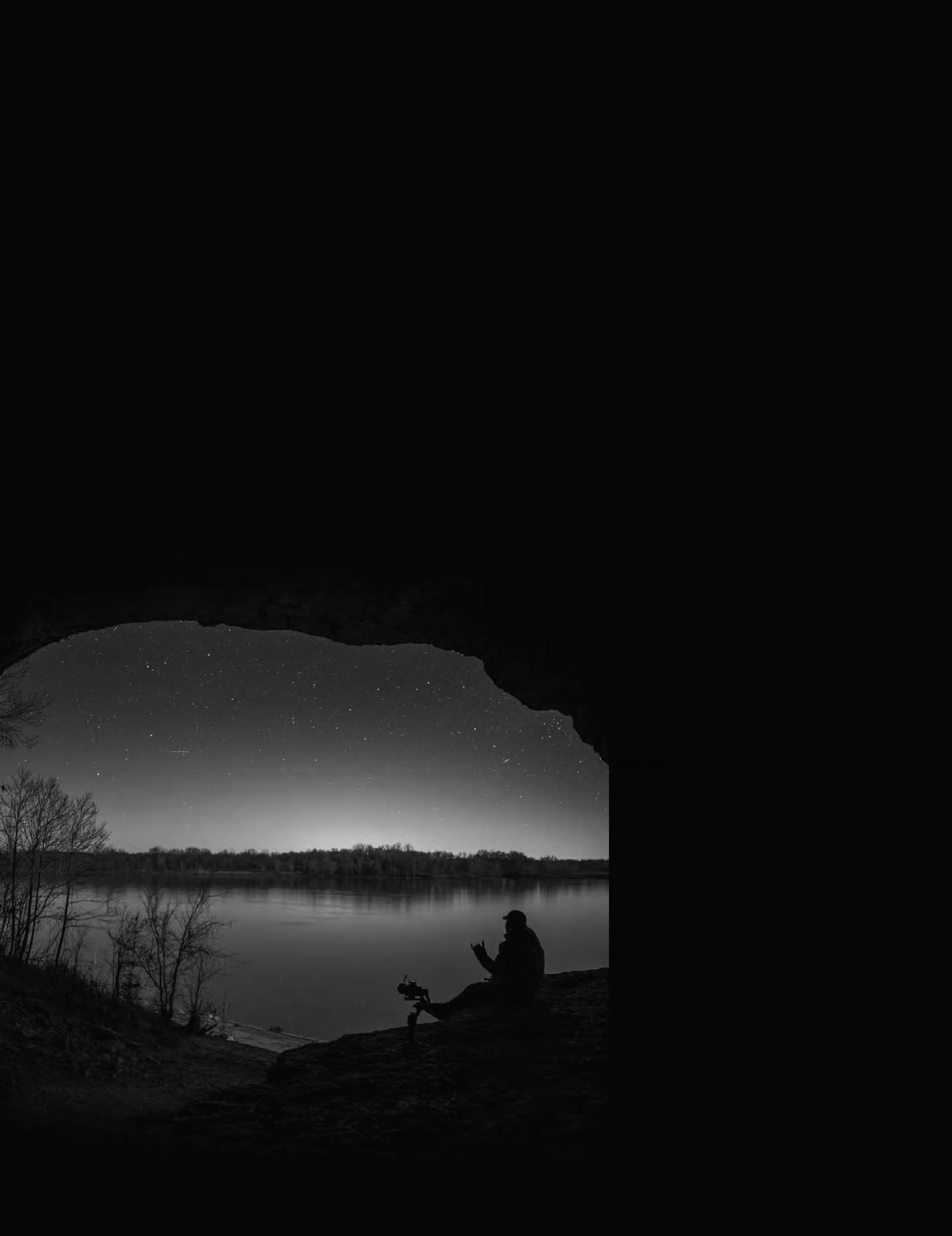
“It’s easy to get caught up in the busyness of life, but when I’m out in the Shawnee National Forest by myself, it forces me to slow down”
While SO ill CINEMA’s stunning video work has been a draw from the beginning, collaboration has played a driving role in its growth. Long has partnered with a growing community of likeminded creators throughout Southern Illinois who are also telling stories through photography, videography, and digital media. Each has their own creative spin, but together they’ve formed a collaborative ecosystem that supports and amplifies one another’s work.
“Collaboration has been a big part of SO ILL CINEMA’s growth,” Long explains. “Working on different projects with other creators in Southern Illinois—and supporting each other by sharing content—has really helped us all build momentum. I think that’s why SO ILL CINEMA has grown as quickly as it has. But it’s not just us—because of that collaboration, I feel like a lot of creative brands across Southern Illinois are growing strong together.”
While his drone continues to fly, Long remains grounded in the place that first inspired it all. He sees Southern Illinois as a region on the rise—one that still hasn’t reached its full outdoor recreation potential—with littleknown natural wonders and a community deeply connected to its rich biodiversity. “We always joke that Southern Illinois is a hidden secret—we don’t necessarily want everyone to know about it,” Long says with a smile. “But honestly, that’s just playful. The truth is that people around here understand how important our state parks and the Shawnee National Forest are to the local economy. They’re a huge draw, and we take pride in sharing that with others.”
Through his creative lens, SO ill CINEMA is doing more than capturing scenic footage— it’s reshaping the way people see Southern Illinois. For lifelong residents, Long’s work often reveals hidden gems they’ve never explored, sparking a renewed sense of curiosity about their own backyard. At the same time, his cinematic storytelling is introducing the region to outdoor enthusiasts from beyond state lines, drawn to its rugged trails, wild landscapes, and untamed beauty. One breathtaking shot at a time, SO ill CINEMA isn’t just putting Southern Illinois on the map—it’s redefining what the map looks like.
CHECK US OUT ON YOUTUBE:

https://www.youtube.com/@soillcinema



• 12th Largest Inland Port by tonnage and 68th in the
•
• Rail
•







Southern Illinois is building a reputation as a hub for food and beverage excellence—where agriculture, manufacturing, and culinary creativity come together to fuel economic growth. From farm fields and vineyards to bustling bottling plants and innovative commercial kitchens, our region’s flavor economy is both a cultural hallmark and a thriving industry.
In The Flavor of Southern Illinois, we showcase the businesses and people who turn raw ingredients into signature products enjoyed across the Midwest and beyond. It’s the farmers supplying fresh produce to local markets, the vintners and brewers crafting beverages that draw tourists, the restaurateurs creating unique dining experiences, and the manufacturers whose bottling and distribution networks keep our region on the move.
These stories aren’t just about good food and drink—they’re about jobs, investment, and community impact. The food and beverage industry here supports local supply chains, fosters entrepreneurship, and attracts visitors, making it a cornerstone of our regional economy.
Whether it’s a family-owned orchard that has grown into a regional brand, a bottling operation expanding into new markets, or a restaurant that becomes a catalyst for downtown revitalization, Southern Illinois proves that flavor is big business.
For nearly nine decades, Pepsi MidAmerica (PMA) has been a fixture in the Midwestern business landscape—growing from a small, entrepreneurial venture into one of the top five independently owned Pepsi franchises in the nation. With a tradition of honoring long-term employees by naming buildings after them, PMA attributes its success to the dedication, resilience, and hard work of the men and women who have shaped its remarkable history.
Founded in 1936 by Harry Crisp, Sr., Pepsi MidAmerica’s story began in an unlikely place: the poultry business. Crisp’s trucks delivered eggs, chicks, and produce throughout the region, but in the early 1930s he saw an opportunity to offer something more. Launching his own line of flavored soft drinks—including Red Rooster and Crisp Flavors—he began delivering them alongside his poultry products. Intrigued by the then little-known Pepsi-Cola brand, Crisp agreed to “test” the product by splitting a shipment with the St. Louis bottler. His gamble paid off—within a year, he secured the Pepsi franchise and launched Marion Pepsi-Cola with just five employees.
Over the decades, PMA steadily expanded, acquiring Dr Pepper franchises, adding new distribution centers, and branching into five states: Illinois, Kentucky, Arkansas, Tennessee, and Missouri. The company has consistently adapted to meet market demand, adding brands like Ocean Spray, Lipton Tea, Gatorade, and Muscle Milk, while also investing in state-of-the-art facilities like Crisp Container, its 100,000-square-foot plastic bottle manufacturing plant in Marion.
Beyond its business growth, Pepsi MidAmerica is committed to workforce development and employee well-being. The company operates a full-line vending service across much of its territory and offers an inhouse Priority Care center for employees and their families. Its partnership with Man-Tra-Con
has led to the creation of a robust CDL Apprenticeship Program, providing hands-on training and career pathways for new drivers. This year, Crisp Container welcomed four new CDL apprentices, continuing the tradition of investing in the next generation of skilled workers.
Recognition for excellence has followed. Pepsi MidAmerica has been named Business of the Year, while leaders Harry L. Crisp II and Keith Dickens have received Lifetime Achievement Awards from the Marion Chamber of Commerce. The company also celebrates its elite “Million Mile Club” drivers—Class A CDL professionals who have reached the milestone of one million safe miles driven, a testament to their dedication and skill.
As Pepsi MidAmerica prepares to celebrate its 90th anniversary in 2026, its legacy is defined by more than just beverages and bottling. It’s a story of perseverance through challenges—from fires and wartime rationing to shifting markets—and of a company that has never lost sight of its roots. With strong community partnerships, loyal employees, and a focus on innovation, Pepsi MidAmerica is poised to keep pouring success into the MidAmerican region for generations to come.

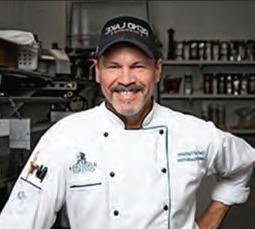
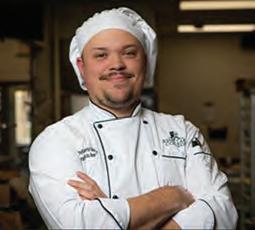
They say food is the universal language—and in Southern Illinois, that language is getting more flavorful by the day. Whether it’s a perfectly seared steak, a flaky croissant, or a scratch-made sauce passed down for generations, great food brings people together. And at Rend Lake College, the Culinary Arts Program is doing much more than filling plates—it’s feeding an entire region’s potential.
“We like to say our students get to work while they learn—and eat their homework too,” laughs Chef Daniel Brock, a program graduate and current instructor. His passion for hands-on learning and real-world experience is woven into every aspect of the program. Chef Brock also jokingly admits that after tasting all the delicious dishes, he may or may not have picked up a few ‘extra lessons’ around the waistline.
Rend Lake College’s Culinary Arts Program was reimagined in the early 2000s to meet the growing demands of the local food industry. Today, it offers one of the most comprehensive culinary training experiences in Southern Illinois, modeled after the Culinary Institute of America. Students can earn an AAS degree in Culinary Arts Management or pursue certificates in Culinary or Baking & Pastry, all while gaining hands-on experience in commercial kitchen environments.
“We’ve worked hard to make sure this program serves the actual needs of our region,” says Chef Jeff Fairbanks, one of the program’s longtime instructors. “We’re not training students in a vacuum. Everything we do is tied to what the foodservice industry in Southern Illinois is asking for.”
Guided by a dedicated industry advisory board, the program stays current with regional workforce needs. Students participate in internships, complete food safety certifications, and engage in everything from community cooking classes to kids’ culinary camps. The college even offers consultation to local foodservice operations, further strengthening ties between education and industry.
Graduates of the program are leaving their mark across Southern Illinois— and beyond. Whether they’re running fine dining kitchens, managing hospital foodservice, or creating small-town favorites, RLC alumni are enriching the region’s food culture. Notable success stories include Troy and Katie of Seasoning Bistro in Marion and Brittney Horn, Executive Chef with the HHS group—but for the faculty, every graduate is a win.
“Our students are amazing,” says Fairbanks. “And they don’t stop learning when they graduate. We stay in touch, support their careers, and keep helping however we can.”
To stay in step with evolving trends, Brock and Fairbanks continuously update the curriculum through research, industry externships, and conversations with employers.
New developments include expanded training at the Southern Illinois Manufacturing Academy (SIMA) in Mt. Vernon, where a confection manufacturing site is on the horizon. It’s part of the program’s long-term vision: to keep expanding, innovating, and making culinary education more accessible across the region.
As Fairbanks reflects, “I’m old enough to remember when dining options were a lot more limited around here. Now, thanks to our students and graduates, there’s a whole new energy in our local food scene—and we’re just getting started.”

LEARN MORE: https://rlc.edu/culinary-arts

“Hi! I’m Katie Karcher, owner of Seasoning Bistro on the Square in Marion, IL. I earned my Associate in Applied Science in Culinary Arts Management from Rend Lake College in 2007–2009—completely debt-free thanks to a Tech Prep Tuition Waiver and local scholarships. I even worked on campus between classes to help cover expenses like gas and food.
The culinary instruction was modern, hands-on, and demanding in the best way. We trained in professional kitchens with top-tier equipment, and the small class sizes meant personal feedback from chefs who cared— like Chef Fairbanks, who still teaches today, and Chef Brock, who was once my classmate. The program truly prepared us for the real world of hospitality.
In fact, my husband and I launched our restaurant from scratch just after graduating, and we’ve been going strong for 13 years.”
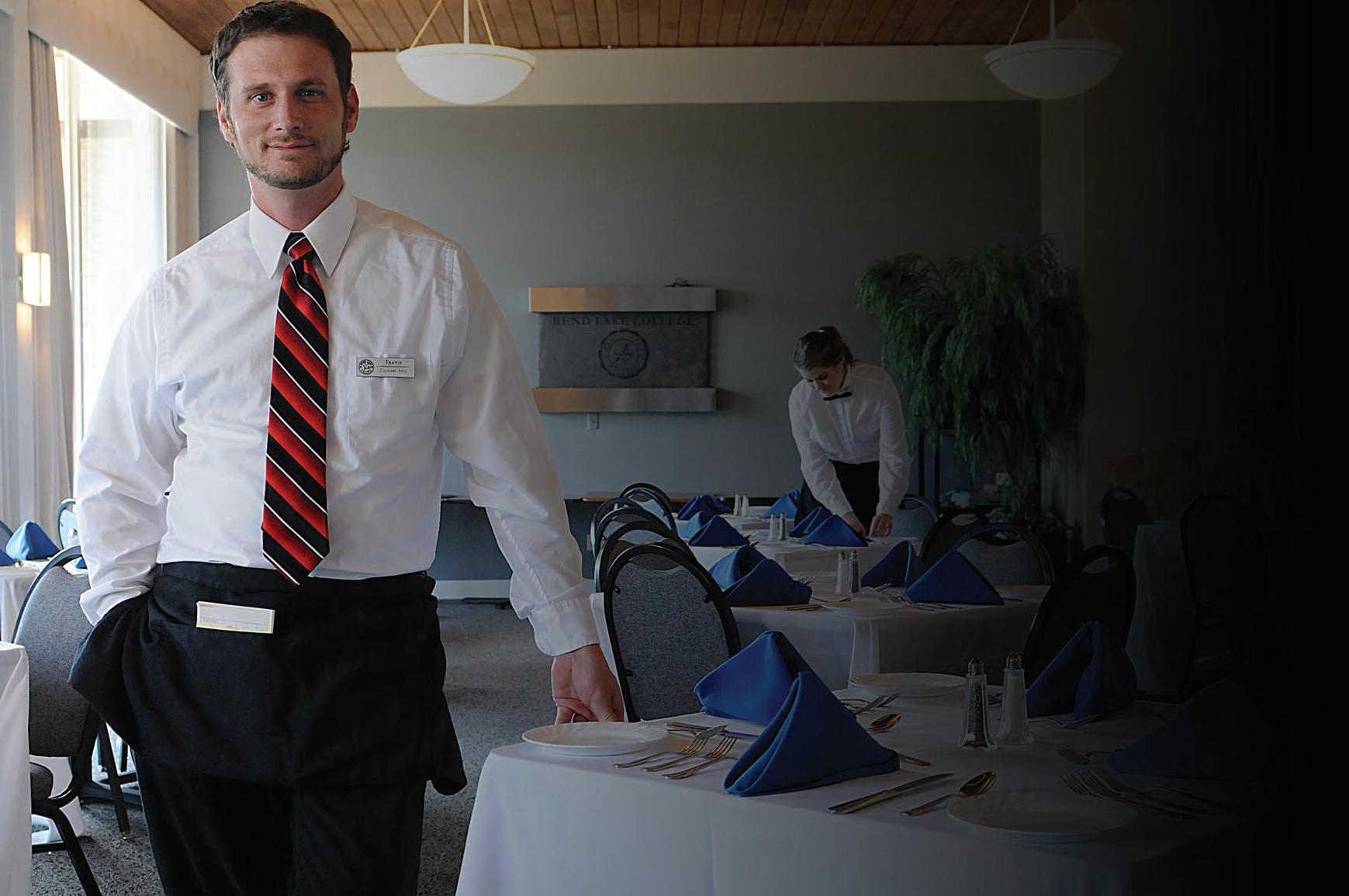
Why Choose Rend Lake College?
Comprehensive Program Options
Transfer Degrees & Short-Term Training
Little to No Experience Needed
Proven Success
Hands-On Learning
Diverse Skill Development
Experienced Faculty
Low Student-to-Instructor Ratio
“They make sure that you understand why you are doing something and there's a reason for it. They are really good at what they do.”
- Alexis Hadley, Class of 2017
Programs we offer.
Culinary Arts Management AAS Degree
Culinary Arts Certificate
Baking & Pastry Arts Certificate
Proficient with commercial kitchen equipment
Master core cooking and baking
Adjust and perfect flavor profiles
Apply math and science concepts
Follow sanitation and safety standards

Curt Jones grew up in Southern Illinois and graduated from SIU, where his curious mind and entrepreneurial spirit were already taking shape. One day, while sitting with his family making homemade ice cream, he wondered what would happen if you dropped ice cream into liquid nitrogen—and voilà, Dippin’ Dots was born.
Now, that same inventive spark has led to 40 Below Joe, a frozen twist on coffee that’s turning heads (and freezing taste buds) across the country.
In a world where cold brew reigns supreme and caffeine innovation knows no bounds, 40 Below Joe offers a frosty, fun take on your daily dose of java. Instead of a traditional brew, it delivers frozen coffee and dairy-free creamer beads in a cup—all eaten with a spoon. It’s a quick, grab-and-go option perfect for busy professionals, students, or anyone craving a chilled caffeine treat.
“We’re more than just a novelty,” says Curt Jones, founder and owner of 40 Below Joe. “We’ve created a product that fits today’s fast-paced lifestyle—perfect for busy professionals, students on the move, or anyone craving a new way to enjoy their coffee.” And it’s not just coffee, the brand also offers other ice cream-style beaded flavors for a fun, flavorful experience.
Already stocked at grocery stores, college campuses, and event venues, 40 Below Joe defies expectations of what coffee can be. And there’s more on the way: freeze-dried coffee is coming soon, offering even more convenience without sacrificing quality.
Whether you’re a die-hard espresso fan or just coffee-curious, 40 Below Joe invites you to think outside the mug. It’s yummy—the SI NOW team knows this for a fact because we tried it ourselves! (You know, for research.)
Because sometimes, the best way to heat up your day is with something refreshingly cold.


Who doesn’t like to start with coffee?
Already making waves in grocery stores, universities, and food service venues nationwide, 40 Below Joe is more than just a tasty trend. The company has created jobs, invested in high-tech food production, and reinforced Southern Illinois as a hub for food and beverage innovation. The business continues to be incubated at SIU’s DunnRichmond Economic Development Center, where research and development are helping expand the product line and unlock even more possibilities.
Because here’s the thing—coffee is just the beginning.
Under the umbrella company Beaded Distribution, Curt and his team are bringing the same flash-freezing genius to a range of other beaded products:
• The Fruity Whey: All-natural, protein-packed beads made from whey—a byproduct of cheese and dairy processing that used to cost companies thousands to dispose of. Curt developed a method to turn it into a delicious, nutritious snack. It’s a “whey” better way to eat healthy.
• Island Rox: Frozen, alcohol-free mocktail beads like Piña Colada and Mango Margarita that let you scoop up tropical vibes any time of day.
• 40 Below Desserts: Classic dessert flavors reimagined into beaded frozen treats for all ages.
With freeze-dried technology pushing boundaries, Beaded Distribution has opened up a whole new frontier for coffee, snacks, and even wellness products. And with additional product lines on the horizon, including dehydrated beaded snacks, the company is well-positioned for continued growth and expanding into new markets. From coffee lovers and protein seekers to flavor adventurers, there’s something frozen—and fantastic—for everyone. This Southern Illinois-grown company is a perfect example of how thinking small, literally, can make a big impact.
In short: the future of food is cool. And it’s being made right here in Southern Illinois.
It may be small, but the strawberry packs a punch—in flavor, in color, and in Southern Illinois’ agricultural economy!
Tucked away in Murphysboro, Illinois, McNitt Growers has quietly become a national player in the food supply chain—without ever growing a single strawberry fruit. Instead, they grow something even more essential: the plants themselves. With nearly 3 million strawberry plants shipped annually to growers in 27 states, McNitt Growers plays a behind-thescenes but vital role in getting those sweet, juicy berries onto plates across the country.
It all started in 1987 when the McNitt family moved to Southern Illinois from Colorado and purchased an apple orchard. The apples didn’t take, so the family experimented—with vegetables, peaches, grapes, and more—until they built their first greenhouse in 1991. That move became a turning point. What began as a search for what would “stick” has since grown into a two-pronged operation: a greenhouse business from January through June and a thriving strawberry plant propagation business from July through October.
Bill McNitt, who returned to the farm after serving in the U.S. Air Force, now
co-runs the business with his brother Andy. Together, they’ve leaned into flexibility and relationship-building—core values that have helped them navigate changing markets, labor shortages, and logistical hurdles. “We’ve done a whole bunch of different things,” Bill says. “But strawberries and the greenhouse have stuck. We’ve been doing strawberries for over 20 years and the greenhouse for more than 30.”
What makes McNitt Growers truly unique isn’t just their scale—few U.S. farms produce strawberry plants at this volume—but their personal approach. While many competitors operate from the East Coast, McNitt’s Midwest location offers a logistical advantage. Even more impressive: the McNitts themselves still do much of the delivery. “Either my dad, my brother, or I are usually the ones driving the trucks,” Bill explains. “Customers see our faces. They know us, and we spend a lot of time on the phone with them too. It’s not just


about dropping off plants. It’s about being part of their success.”
McNitt Growers supplies plants to many of Southern Illinois’ most beloved berry farms— household names for anyone who’s visited a local “you-pick” operation. In that way, McNitt doesn’t just support agriculture; they help anchor Southern Illinois’ tourism and local food scenes.
Though they aren’t actively seeking major expansion, the McNitts are focused on refining what they do best—supporting their growers and delivering exceptional service. “We’ve found a size that feels right,” Bill shares. “It allows us to stay hands-on with our customers and maintain the quality we’re proud of.” Rather than chasing growth for growth’s sake, they’re investing in relationships and exploring ways to enhance their retail offerings at the greenhouse, always looking for thoughtful ways to evolve.
From humble beginnings to becoming a key supplier in the national strawberry industry, McNitt Growers is proof that innovation, adaptability, and good old-fashioned customer service still go a long way. And in the fertile heart of Southern Illinois, it’s not just fruit that’s growing— it’s legacy.


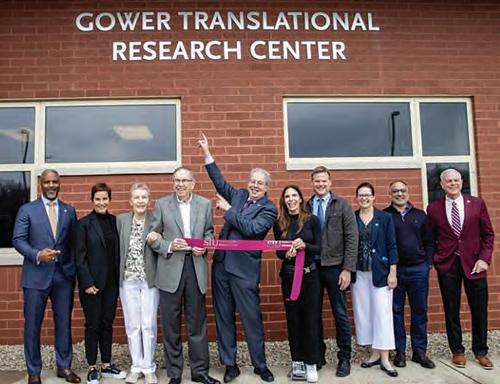
Where does university research intersect with business and societal needs? The Gower Translational Research Center at Southern Illinois University (SIU)!
The facility formerly known as the iFERM Hub has a new name – The Gower Translational Research Center. In April of 2025 SIU celebrated the generous $2.5M donation of Bob and Mary Beth Gower in a formal ribbon cutting and re-naming ceremony. With the support of the Gowers, the activities in the facility will advance the overarching goal of translating academic research into commercial ideas and products which benefit Southern Illinois and beyond.
The newest facility, BioLaunch, which opened in October 2024, includes biotechnology, analytical, and mass spectrometry labs; a meeting space; and business incubator services. Recently, in support of local businesses, the labs performed caffeine analysis for new product development, and fastturnaround cannabinoids analysis for product shipment. The BioLaunch’s regional location and scientific staff qualifications offer unique advantages in successful product development for specialty and value-added agricultural businesses.
Building upon BioLaunch, the next facility will feature a 2500 square foot Hi-Tech, Energy-Efficient, Kitchen of the Future. The space and services will enable small food producers to scale operations, meet food safety standards, and reach broader markets. Anticipated opening for this facility is late 2026.
contact Ken Stoner at kstoner@siu.edu or stop by the Gower Translational Research Center at 1785 University Press Drive, Carbondale. FOR INFORMATION ON



World-Class Research, Southern Illinois Spirit.
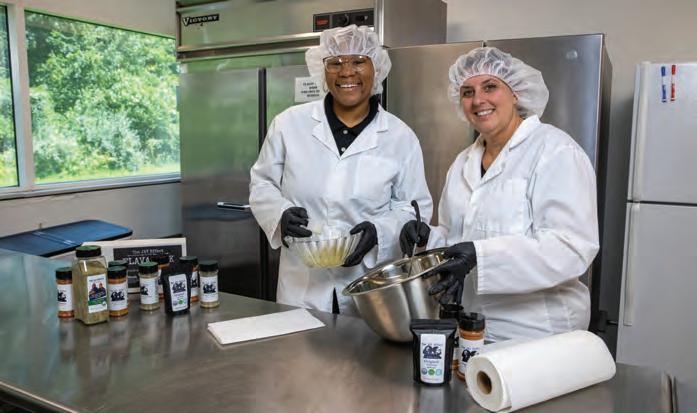
We’re R1, the highest level for research. And we’re officially an Opportunity University. Only 21 universities in the nation have earned both designations from the Carnegie Classification of Institutions of Higher Learning.
Bringing R1 research to Southern Illinois doesn’t just elevate SIU. It brings innovation, jobs, and opportunities that ripple though the region—and beyond.
$2.7 BILLION 18,601 jobs Operations Economic Impact
$1.36 BILLION 9,669 jobs Student Spending Impact
$163 MILLION 1,335 jobs Alumni Impact $1 BILLION

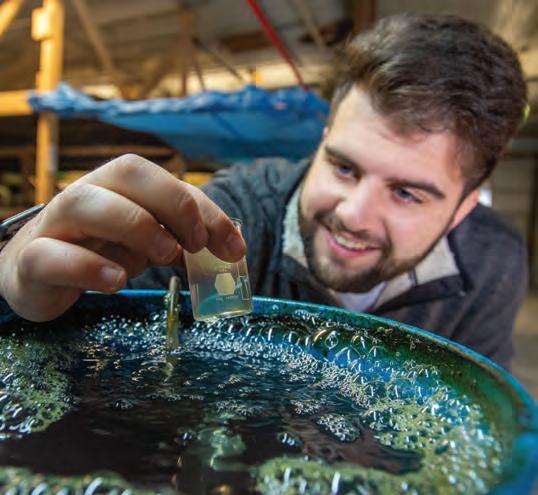


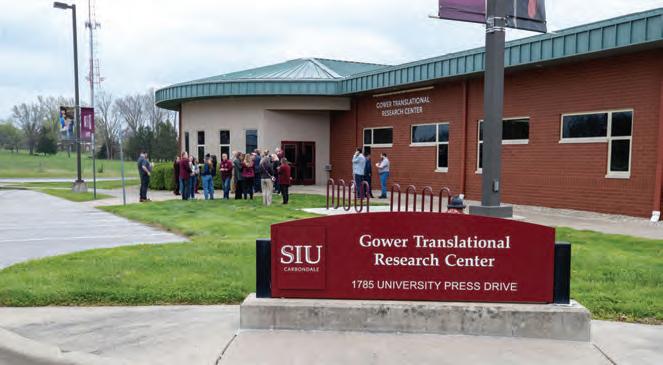
• Dedicated translational research facility (from the bench to the marketplace and everything in-between)
• 65K square feet research and business development services
• Testing and Analysis scientific equipment and staff
• Coming soon: high-tech food production/kitchen incubator
• Additional biotechnology/biofermentation product laboratories

You
the ideas. We’ve got the resources to help you make it happen.
Advanced Energy Institute
• APEX Accelerator at SIU
• BioLaunch • Cannabis Science Center • Center for Virtual Expression
• Dunn-Richmond Economic Development Center
• High Tech Kitchen • Gower Translational Research Center
• iFERM Hub (Illinois Food, Entrepreneurship, Research and Manufacturing) • Illinois Small Business Development Center at SIU
• L. Brent Kington Smithy
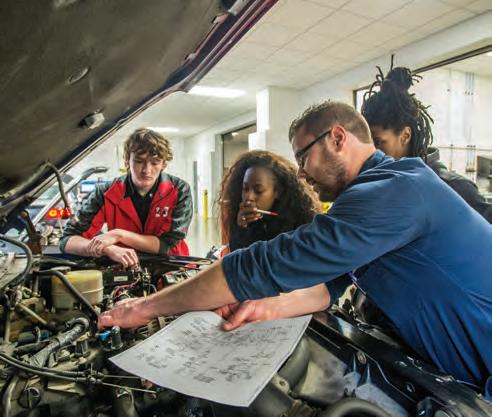

In Southern Illinois, the term runway carries more than one meaning. It’s not just about planes lifting off into the sky—it’s about launching opportunity, accelerating growth, and connecting rural communities to a global economy. From regional passenger terminals to air cargo corridors and corporate jet access, our network of public-use airports plays a quiet but powerful role in shaping the region’s future.
The R4 Advantage Series - Rivers, Rail, Roads, and Runways - spotlights the essential infrastructure moving Southern Illinois forward. And this issue kicks off on the tarmac.









Local airports like Veterans Airport of Southern Illinois, Southern Illinois Airport in Murphysboro, and nearly a dozen of general aviation facilities across the region are fueling economic development, workforce mobility, and innovation in industries from healthcare to logistics. These runways aren’t just lifelines—they’re launchpads for business, tourism, and resilience.
With fresh investment, long-term vision, and local leadership, the skies over Southern Illinois are full of possibility. In this feature, we take a closer look at the stories behind the runways—the people, the partnerships, and the plans that are helping Southern Illinois take off.








































































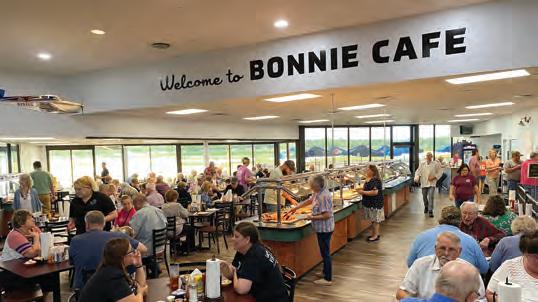
Mt. Vernon Outland Airport, known by the call letters “KMVN”, sits just east of Mt. Vernon, Illinois, the mid-point between St. Louis, Missouri and Evansville, Indiana. It is a standout example of a general aviation hub with commercial-grade infrastructure, boasting two paved runways—the primary one stretching 6,498 feet which can accommodate the largest narrow-bodied airliners. While the airport has not hosted a commercial air carrier since 1999, the airport still supports the infrastructure which includes advanced runway lighting, snow removal, perimeter fencing, Air Rescue Fire Fighting and other safety protocols.
“This is an airport that is more suited for a community of over a 100,000, but it’s in Mt. Vernon. We have all the infrastructure, and we can handle just about anything that could come our way,” explains airport director Chris Collins. That sentiment, echoed by airport leadership, underscores how KMVN is punching above its weight and the impact is substantial. A recent Illinois Department of Transportation study showed that the airport is generating an estimated $40.2 million in annual economic output and supports 278 jobs, placing KMVN as one of the top airports in Southern Illinois. With over 27,000 aircraft operations in 2024, it serves as a vital conduit for cargo, corporate travel, general aviation, and medical flights, all of which fuel the local economy.
Moreover, its strategic positioning cannot be overstated. “There are four automotive component manufacturers within a 30-mile radius of Mt. Vernon plus two interstates converge here. So, there are time periods when we handle a lot of cargo,” explained Collins. ”There might be an
assembly line here that’s waiting on a subcomponent to be made in Mexico or Canada and it gets flown in here. The routes could reverse during the next run.”
With I-57 and I-64 merging nearby, and five Class I railroads crisscrossing Jefferson County, KMVN stands as an economic focal point with plenty of room to expand in the adjacent innovation park. The airport has set land available for future development, eyeing aircraft component manufacturers and aircraft maintenance companies.
Adding to the airport’s unique charm is Bonnie Café, located inside the terminal building. The restaurant has become a local favorite and a destination in its own right, drawing both pilots and community members alike for its homestyle meals and unbeatable views of the runway. It’s not uncommon to hear pilots joking about flying in for one of aviation’s classic traditions—the “$100 hamburger”—a lighthearted reference to the cost of fuel and flight time just to grab a good meal.
Next year is sure to be a big year at KMVN, as the airport will serve as the final destination for the prestigious Air Race Classic, a women-led crosscountry flying competition spanning nine states. This four-day aviation celebration in June 2026 is a major spotlight—attracting hundreds of people from across the country. Hosting the Air Race Classic finale is a testament to KMVN’s capabilities and a golden opportunity to boost local tourism, community pride, and aviation visibility. It’s a big deal for Southern Illinois—and one more reason why this airport truly soars above expectations.
Apillar of Southern Illinois’ aviation story is a stretch of farmland west of Marion surrounded by the remnants of former coal strip mines—now home to the Veterans Airport of Southern Illinois. What began in the 1920s and ’30s as a grassroots effort led by local aviator Fred Valentine, who moved his flying service across town to land he purchased himself, has grown into a regional transportation hub built on a vision of the future. Long before Illinois Route 13 and Interstate 57, Valentine saw the potential of flight—and the opportunity it would provide to the community.
Over the decades, runways have lengthened, commercial service has evolved, and the airport’s name has changed from Williamson County Airport to Veterans Airport of Southern Illinois. Today, Veterans Airport of Southern Illinois, with call letters KMWA, is more than just a regional airport—it’s a vital economic engine and gateway to the world. As the only airport in Southern Illinois offering daily commercial jet service, it connects the region directly to Chicago O’Hare, one of the world’s busiest airports. Perfectly positioned along Illinois Route 13, a six-lane highway, and surrounded by Interstates 57, 64, and 24, the airport sits at a logistical sweet spot that makes travel and transport effortless. “We’re incredibly fortunate to have this location in Southern Illinois,” said airport director Doug Kimmel. “Combine that with the facilities we have in place and the available property, and it makes for a truly strategic and accessible site.” This connectivity doesn’t just move people—it drives growth.
What sets Veterans Airport apart is its ability to meet both commercial and general aviation needs with impressive infrastructure that includes an 8,000-foot runway, capable of accommodating everything from small private planes to large commercial jets. This kind of capacity is rare for a regional airport and positions Veterans Airport as a vital resource for industries, travelers, and military operations across the area.
A major milestone in the airport’s development is the completion of a brand-new general aviation terminal, which opened in Fall 2025. This new modern facility is designed to support the daily operations of private
and corporate aircraft, with everything from fueling and maintenance services to flight planning rooms and crew lounges. “We’re wrapping up construction on a new general aviation terminal — the hub for daily activity involving private and corporate aircraft,” Kimmel shared. “It’s really the heart of the airport’s operations.”
In addition to general aviation, commercial service is thriving at Veterans Airport. Through a partnership with Contour Airlines, the airport offers daily jet service to Chicago O’Hare International Airport—one of the busiest and most connected airports in the world. Nearly 26,000 passengers a year take advantage of this one-hour flight between Marion and Chicago, making air travel easier for domestic and international destinations.
Direct connectivity to Chicago O’Hare from Veterans Airport of Southern Illinois is a game-changer for regional employers, making it easier to recruit top-tier talent by offering quick and reliable access to a global travel hub. For businesses considering relocation or expansion, this daily jet service is a major competitive advantage—linking Southern Illinois to national and international markets with ease. The airport plays a key role in regional economic development, supporting job creation, attracting new investment, and improving the overall connectivity of Southern Illinois.
With momentum building, Veterans Airport of Southern Illinois is more than just a place to catch a flight—it’s a gateway to opportunity and growth for all of Southern Illinois. Future growth opportunities include expanding commercial air service to additional major hubs, further increasing regional connectivity and convenience for both business and leisure travelers. The airport is also primed to become a key player in the air cargo industry, thanks to its 8,000-foot runway, ample apron space, and uncongested airspace—offering ideal conditions for freight carriers and logistics operations. Adding to its appeal is the abundance of adjacent, development-ready land, making it a prime location for companies seeking direct access to air and highway transportation. Whether it’s aviation-related businesses, logistics hubs, or advanced manufacturing, Veterans Airport offers a unique opportunity for companies to grow alongside a region on the rise.

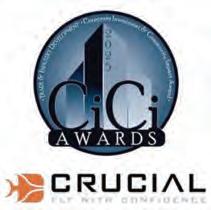
Crucial MRO, in partnership with the City of Murphysboro, has been named one of only 15 recipients nationwide of the 2025 Community Impact Award by Trade & Industry Development magazine as part of its prestigious Corporate Investment/ Community Impact (CiCi) Awards
Now in its 19th year, the CiCi Awards recognize transformational economic development projects across the U.S. that generate significant capital investment or deliver lasting community benefits—or both. With hundreds of applications submitted from across the country, Crucial MRO’s selection places Murphysboro among an elite group of communities recognized for their innovation, partnership, and long-term vision.
“The Crucial Aviation development is an extremely important project for Murphysboro. The historic property is set to become a critical hub of economic activity that will be a springboard for even more success in the future,” noted City of Murphysboro Mayor Will Stephens.
Crucial MRO’s project in Murphysboro stood out for its transformational effect on the region, promising to create jobs, stimulate economic growth, and contribute to long-term community revitalization. The award celebrates not only the company’s investment but also the collaborative effort between public and private sectors that made it possible.
“Being recognized alongside major cities and global brands like Boeing, Meta, Toyota, and Google is a tremendous honor,” said Crucial CEO Marc Burton. “This award affirms the impact of Crucial MRO’s investment and the City of Murphysboro’s commitment to economic development and innovation.”
Winners of the 2025 CiCi Awards span diverse industries and geographies—from biotech and clean energy to advanced manufacturing and data centers. Collectively, this year’s honorees represent over $65 billion in capital investment and the creation of more than 30,000 new jobs.
“These projects represent the brightest of the U.S. economy,” said Trade & Industry Development Publisher Scott Swoger. “They create raw growth at the macro level, and community-changing opportunities at the micro level.”
The recognition of Crucial MRO and Murphysboro signals a bright future for Southern Illinois, showcasing how strategic investment and community partnership can drive meaningful change on a national stage.
“Crucial’s expansion and impact on the City of Murphysboro and the broader Southern Illinois region made it a prime candidate for Trade & Industry Development’s annual Community Impact Award. Beyond the economic benefits, the collaborative spirit and determination to see this project through highlight Southern Illinois’ dedication to attracting companies and supporting their growth, and Crucial’s expansion is a perfect example. A win for one is a win for all of Southern Illinois and this win is big for the City of Murphysboro.” said SI Now Executive Director and award nomination coordinator Deb Barnett.

The full list of CiCi Award winners appears in the Q2 issue of Trade & Industry Development, available in print and online at www.TradeAndIndustryDev.com.
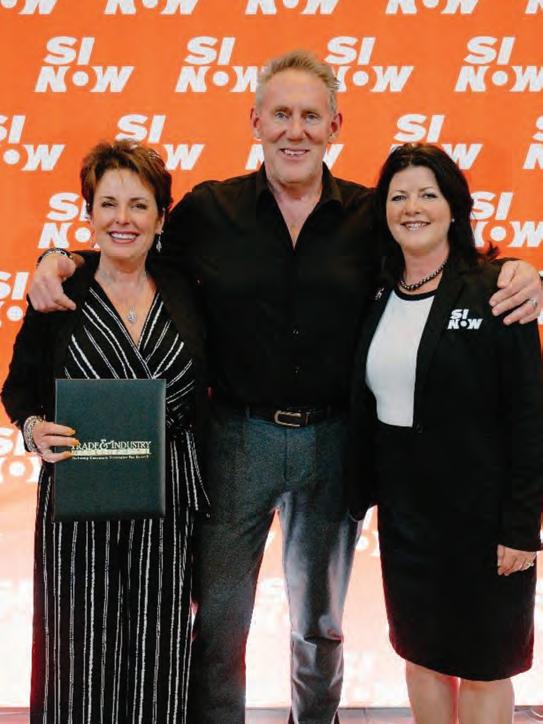
By Dr. Steve O’Keefe, Assistant Vice President for Marketing, Public Relations, and Communications at John A. Logan College
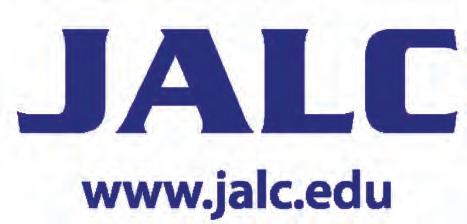
As the sun rises on a new academic year at John A. Logan College, a wave of transformation is sweeping across the Carterville campus. With several high-impact construction projects set to break ground, the College is not only reshaping its physical appearance, it’s redefining educational opportunity for its students and the broader southern Illinois community.
The crown jewel of this transformation is the much-anticipated Career and Technical Education (CTE) Center. Made possible by a $4.2 million grant from the U.S. Economic Development Administration—matched dollar-for-dollar by the College—the $13.1 million project represents a bold investment in the region’s future workforce.
“This facility will completely transform and modernize our Career and Technical teaching and training abilities,” said Dr. Kirk Overstreet, President of John A. Logan College. “It will bring state-ofthe-art tools and training opportunities, providing a well-trained and well-educated community and fostering new economic growth for our industry partners in southern Illinois.”
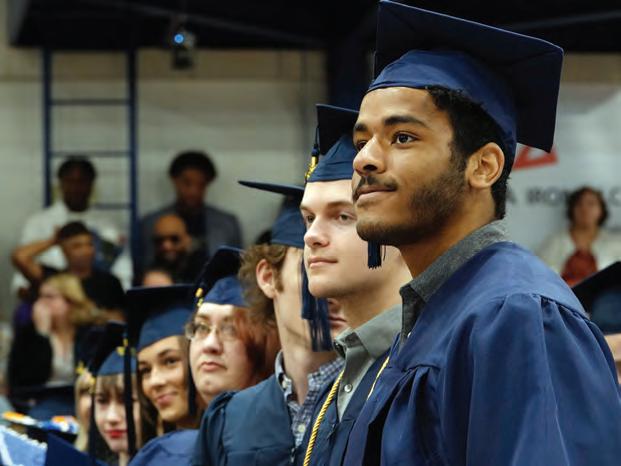
The future doesn’t wait—and neither does Southern Illinois.
In a world where industries shift overnight, our region is proving that creativity is just as essential to workforce development as skill and training. Businesses, educators, and community leaders are joining forces to design bold, forward-thinking solutions that prepare workers for the opportunities of tomorrow.
From aligning education with high-demand careers to infusing advanced technology into traditional industries, these efforts are transforming challenges into opportunities. The result: stronger skills, clearer career pathways, and a more resilient economy.
This is more than problem-solving—it’s future-building. The stories in this section show how Southern Illinois is turning workforce
challenges into springboards for growth, proving that when creativity leads, the possibilities are limitless.
“The best way to shape the future workforce is to build it with intention and creativity”
Inspired by Peter Drucker
The new CTE Center, situated adjacent to the current H Building, will feature a brand-new welding lab and classroom, as well as significant renovations to the Automotive, Auto Body, and HVAC programs. Together, these upgrades will give students access to cutting-edge equipment and real-world training environments that align with today’s industry standards.
A groundbreaking ceremony is slated for later this fall.
Also underway is a dramatic facelift for the College’s main entrance, funded by the Illinois Capital Development Board. This project, already in progress with the installation of a new elevator, will culminate in a modernized front entry that not only enhances curb appeal but also significantly expands student services.
Dr. Overstreet emphasized the impact: “The entrance project is about more than aesthetics—it’s about access. This renovation ensures students are greeted with a space that’s functional, welcoming, and equipped to meet their needs from day one.”
Meanwhile, the Harrison Bruce Baseball and Softball Player Development Facility is nearing completion, adding another gem to the College’s growing portfolio of advanced learning and training spaces. This facility will provide student-athletes with one of the finest development centers in the Midwest, further cementing JALC’s reputation for excellence both in the classroom and on the field.
Healthcare education is another cornerstone of John A. Logan College’s future-facing vision. With the healthcare industry facing nationwide staffing shortages, JALC is responding by expanding its offerings.
A recent federal grant will allow the College to finish the fourth floor of the Communications Wing, creating additional space for its thriving nursing program. This follows a recent remodel of the ground floor, now home to the Surgical Technology and Medical Laboratory Technology programs.
“Our healthcare programs are vital to southern Illinois,” said Overstreet. “This expansion not only benefits our students as they prepare for their careers but also strengthens the healthcare infrastructure of our entire region.”
While many colleges are bracing for an “enrollment cliff,” JALC is bucking the trend. The College is seeing growth in both overall enrollment and demand for Career and Technical Education and Healthcare programs. More students are discovering the value of starting their educational journey at JALC, where affordability meets excellence.
“Our students in career and healthcare programs are walking into jobs upon graduation,” Overstreet said. “And our transfer students consistently outperform their peers at four-year universities.”
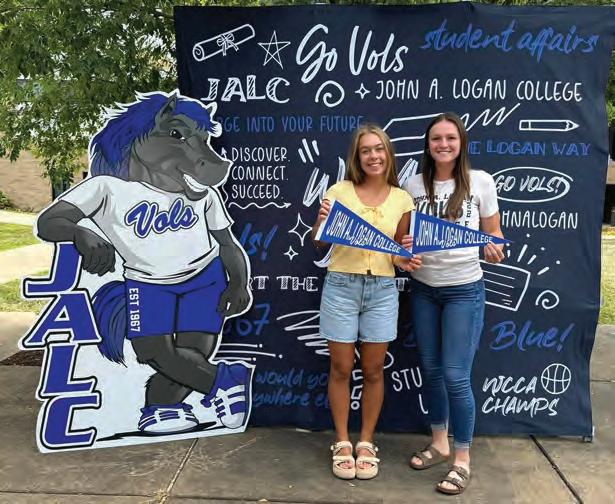
John A. Logan College is set to launch a new innovative program with its in-district high schools to provide last-dollar scholarships to participating students, enabling students to attend the College at no cost. College leaders unveiled the details of the innovative Promise Scholarship Program. This groundbreaking new initiative will make higher education more accessible for local students, to representatives from the College’s in-district high schools on Monday at a meeting on the Carterville campus.
The Promise Scholarship aims to support local students by covering the remaining tuition costs at JALC after all financial aid and other scholarships have been applied. Beginning in fall 2026, the scholarship will be available to all John A. Logan College in-district high schools. With the first cohort of students entering Fall of 2030.
Students must enroll in the Promise Scholarship Program during their freshman year of high school. The program requires participating students to maintain a minimum GPA of 2.0, have a 90% attendance rate each year, complete four years of high school math, take six credit hours of dual credit, early college, or transitional courses, and complete the JALC College 101 course. Students can attend JALC at no cost by meeting these requirements, significantly reducing the financial barriers to higher education.
Yes, there will be dust. Yes, there will be detours. But the temporary inconvenience is a small price to pay for the future that is taking shape at John A. Logan College.
With state-of-the-art facilities, forward-thinking leadership, and a laser focus on student success, the College is not just preparing students for the next step—it’s preparing a region for the next generation.
So as JALC breaks ground, it’s also breaking barriers. The message is clear: Big things are happening at JALC. And the best is yet to come.
— Charge Into Your Future!
Aquiet revolution is underway in Southern Illinois, and it starts in the classroom. John A. Logan College is set to start a new Promise Scholarship, designed to make higher education more accessible while fueling long-term economic growth across the region. Launching with the high school graduating class of 2030, this program offers eligible students up to two years of indistrict tuition at JALC completely free of charge.
But this is more than just a scholarship program. “This program is about breaking down financial barriers and creating a clear pathway from high school to college,” said April Martinez, Director of Enrollment Management at John A. Logan College. “It’s a long-term investment in our students, families, and communities.”
To qualify, students must meet certain requirements while in high school, including maintaining a 2.0 GPA, achieving 90% attendance, completing nine credit hours of dual credit or early college coursework, completing JALC’s Orientation course (ORI 100), and taking math all four years of high school. These requirements are intentionally designed to promote both college access and academic preparation.

Dr. Kirk Overstreet, President of JALC, sees even greater implications:
“The Promise Scholarship doesn’t just support individual students, it supports the future of Southern Illinois. These are the next nurses, teachers, technicians, and business leaders who will stay local and strengthen our regional economy.”
As industries across the region face critical worker shortages, this initiative positions JALC as both an educational hub and an economic driver. By investing in its students, the College is making a statement: the future of Southern Illinois is worth staying for and it starts with an opportunity at John A. Logan College.

FOR MORE INFORMATION or to donate to this life-changing scholarship, please visit www.jalc.edu/promise-scholarship
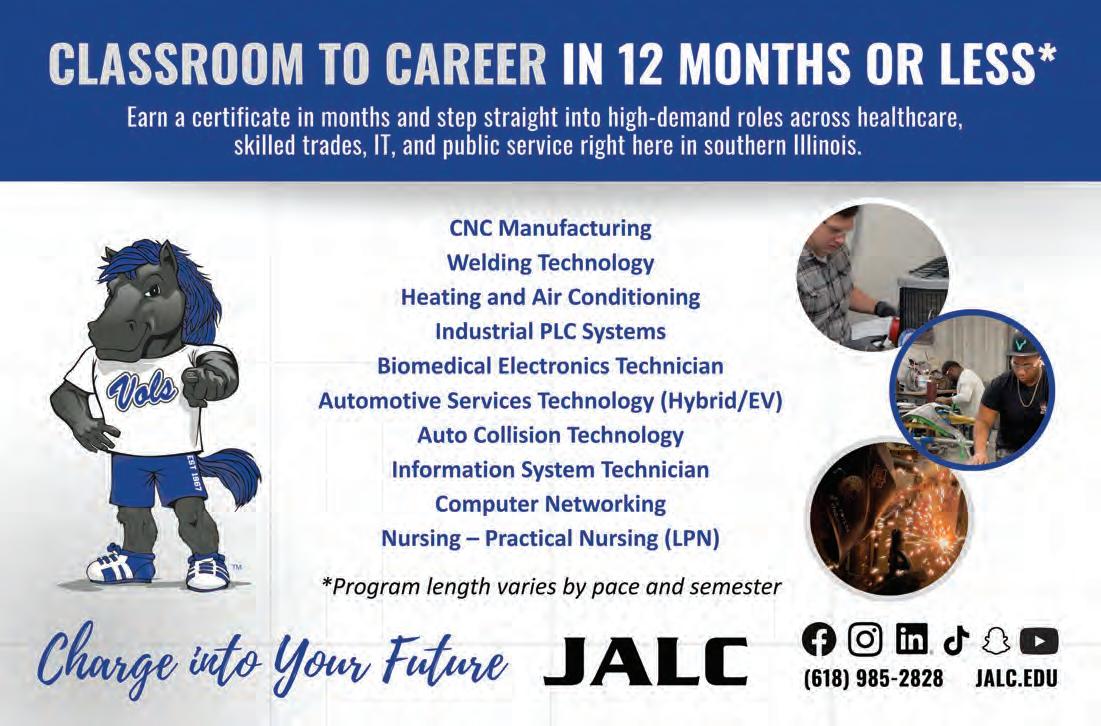
At Carbondale Community High School, we believe that “a student can’t dream about what they haven’t been exposed to,” said Daniel Booth, Superintendent. This philosophy drives our mission to provide students a personal pathway to a productive future—making career possibilities visible, accessible, and achievable.
Through expanded Career and Technical Education (CTE) programs, students gain hands-on experience in fields like healthcare, engineering, culinary arts, construction trades, welding, and cosmetology. Our innovative Job Fair, held in partnership with over 20 local businesses, connects students directly to employers—offering interviews and even on-the-spot hiring. Weekly career exploration visits further ignite curiosity, helping students envision futures they may never have imagined.
By bridging education and opportunity, Carbondale is not just preparing students for the workforce—we’re helping them see what’s possible.
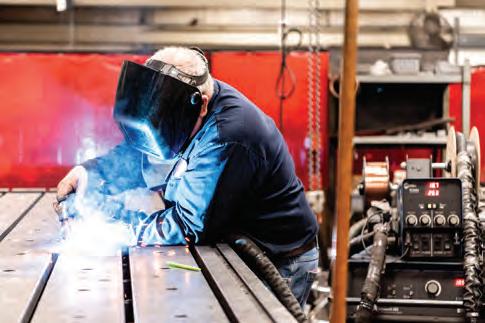

Daniel Booth, Ed.D. Superintendent
Carbondale Community High School
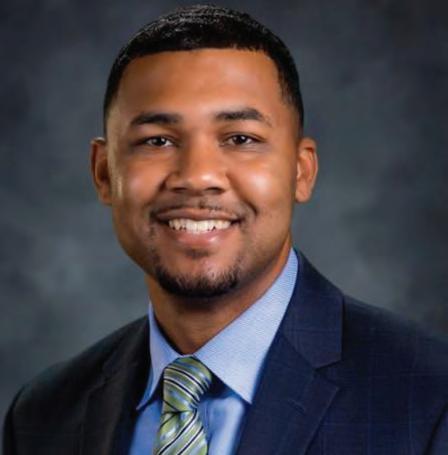
TO LEARN MORE ABOUT CTE programs and pathways, visit https://www.cchs165.jacksn.k12.il.us/academics/ career-and-technical-education/cte-programs



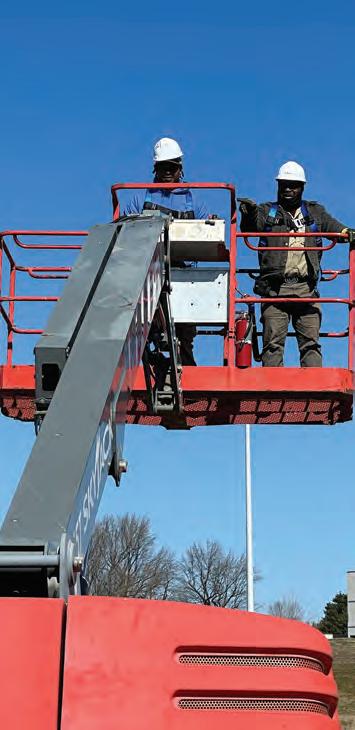
In southernmost Illinois, a transformative opportunity is changing lives, one student, one project, and one success story at a time, and it’s happening at Shawnee Community College (SCC).
The Highway Construction Careers Training Program (HCCTP) at SCC is more than just a pathway to employment, it’s a launchpad to a brighter future. Since its start in September 2022, this hands-on, high-impact program has already helped more than 40 individuals gain the skills, confidence, and connections needed to thrive in the highway construction industry.
“Whether in the classroom or on job sites, our students are making a real difference in communities in southern Illinois,” said Cameryn Curtis, HCCTP Coordinator. “This program has changed lives, and it’s just getting started.”
A collaboration with the Federal Highway Administration and the Illinois Department of Transportation, SCC’s HCCTP was launched with one year of mentorship and support from John A. Logan College’s longrunning program. Now, SCC is proudly
leading the charge in construction training at its Alexander County Extension Center in Cairo.
Each session of HCCTP spans 12 weeks and delivers 450 hours of rigorous, real-world training. Students learn essential trade skills like concrete flatwork, blueprint reading, forklift operations, welding, carpentry, and more. They also receive OSHA 10 training, life skills coaching, and refresher math courses, all aimed at ensuring graduates are confident, capable, and job-site ready.
But this program is about more than tools and textbooks, it’s about removing barriers. Students receive a stipend to help cover living expenses during training, making the program accessible to those who might not otherwise have the opportunity.
“I appreciate the opportunity to better myself, have a career, and leave a legacy for my kids,” said recent graduate Carlus Davis. For Carlus, and so many others, HCCTP isn’t just a program; it’s a life-changing experience.
The impact goes beyond individual growth. In Spring 2025, HCCTP students constructed
a new sidewalk in Grand Chain, drawing praise from local leaders and giving students real, resume-building experience. They’ve also supported flood relief efforts, filled sandbags in times of need, and connected with regional partners such as E.T. Simonds, Samron, and the International Union of Operating Engineers Local 318.
David Wyatt, another proud graduate, shared, “HCCTP taught me how to sharpen my skills and get ready for what’s necessary to move forward. This has been great for me and my family.”
Open to adults 18 and older with a high school diploma or GED, a valid driver’s license, and the ability to pass a drug screening, the program runs twice a year, in fall and spring. Recent graduates have also had the opportunity to earn a CDL at SCC.
This isn’t just job training, it’s a foundation for a new beginning.
TO APPLY for an upcoming class or to request a community project, visit shawneecc.edu/hcctp


Southeastern Illinois College (SIC) is building the future of Southern Illinois one skilled worker at a time. Through the Stanford D. Williams Career and Training Center and the David L. Stanley Center in Carmi, SIC is delivering accessible, hands-on workforce training that meets the region’s most pressing employment needs—while also investing in the next generation of talent.
“Our goal is to ensure that every resident of Southern Illinois has access to high-quality workforce training that leads to real opportunities right here at home,” said Dr. Karen Weiss, President of SIC.
Both centers are part of SIC’s long-term vision to strengthen Southern Illinois’ workforce and support local economic growth. By expanding career and technical education (CTE) in high-demand fields, these centers ensure residents can gain job-ready skills close to home. This effort is about more than filling positions—it’s about creating sustainable, resilient communities equipped for the evolving economy.
At the Stanford D. Williams Career and Training Center, students develop realworld expertise in welding, industrial maintenance, automotive, carpentry, plumbing, electrical, hydraulics, agriculture, and basic IT. With modern facilities and state-of-theart equipment, including virtual simulations that complement hands-on learning, SIC trains students using industry-standard tools and practices. For example, the welding shop features advanced multi-process machines that prepare students for varied industry needs with the turn of a switch.
“We work closely with local employers to make sure our students are learning exactly what
they’ll need on day one of the job,” explained Griffin Hart, CTE Program Specialist at the Williams Center.
What sets SIC’s approach apart is its close partnership with local industry and unions. Companies such as Campbell Energy, Car Corral Polaris, Elastec, Nix Industrial, Mitchell Drilling, Martin & Bailey, Illinois Petroleum Resource Board, Marshall Electric, and Vibracoustic regularly meet with SIC faculty and staff. These twice-yearly advisory councils ensure the curriculum stays current with changing technologies and employer needs, so graduates can step straight into local jobs with confidence.
These partnerships also lead to real success stories. When Nix Industrial identified a need for welders, SIC collaborated to create internship pathways. One student, Lucas Lueke, completed his coursework while interning at Nix each afternoon. By graduation, he was offered a full-time welding position less than 30 minutes from home—an outcome that showcases the power of tailored training and strong community connections.
“These centers are part of our plan to build a sustainable talent pipeline and help Southern Illinois thrive for generations to come,” added Dr. Billman, Executive Dean of Academic Services.
Beyond preparing high school students, the Williams Center offers training for adult learners looking to upskill or change careers, including CDL licensure and welding certifications. Donor generosity—including a major contribution from Stanford D. Williams himself—has helped ensure these facilities remain cutting-edge, making workforce development accessible to the entire region.
Meanwhile, the David L. Stanley Center focuses on healthcare training and vital community services in White County. It offers CNA courses in a dedicated lab space and serves as a hub for employment resources. As a local Illinois WorkNet One-Stop Center, it partners with the Workforce Innovation and Opportunity Act (WIOA) program, the Illinois Department of Employment Security (IDES), and other workforce development partners. Unemployed or underemployed residents can get career counseling, training opportunities, and direct connections to local employers—all under one roof.
The Stanley Center also hosts the Secretary of State’s Office DMV, which moved on-site this year. This collaboration addressed a clear community need, offering local residents convenient licensing services and even laying the groundwork for future CDL testing to support SIC-trained drivers.
Together, these centers help close workforce gaps in traditionally underserved rural areas. By training young people for in-demand careers and providing adult learners with new pathways, SIC is helping bridge the age gap in the trades while supporting local industries central to the region’s identity, like agriculture and oil/gas.
Looking ahead, SIC is committed to growing alongside its community. Plans are underway to expand training in agriculture to meet the district’s significant needs. College leaders are also exploring a potential partnership with the Illinois Petroleum Resource Board and local employers to develop hands-on training for the oil and gas industry—a sector with strong roots in Southern Illinois. While still in early discussions, these ideas demonstrate SIC’s commitment to staying responsive and forward-thinking.
Ultimately, the Stanford D. Williams Career and Training Center and the David L. Stanley Center reflect SIC’s mission to provide quality, accessible, and accountable learning opportunities. By aligning education with real workforce needs, SIC is not only helping students succeed—it’s investing in the region’s future.

Like many employers, Intertape Polymer Group (IPG) faces today’s hiring challenges head-on by seeking new ways to expand its applicant pipeline. One of those ways is through second chance employment, offering opportunities to individuals who are ready to rebuild their lives and careers.
“At IPG, we are open and always looking for opportunities to be inclusive,” said Glenn Edwards, CI Process
Manager.
“Second chance employment allows individuals to learn, grow, and develop new skills while strengthening our workforce.”
The impact has been clear. Employees hired through this pathway often bring a strong desire to succeed, resulting in higher retention rates and greater workforce stability. IPG points to multiple success stories where team members have not only stayed long-term but also advanced, gaining both professional growth and job satisfaction.
For employers considering this approach, Edwards’ advice is simple: be openminded. Second chance employment not only expands applicant pipelines but also provides individuals with a pathway to a better future. Community partners like Man-Tra-Con have also been instrumental in supporting both candidates and IPG in building success stories.
By embracing second chance hiring, IPG continues to grow its workforce in ways that make a meaningful difference—for the company, employees, and the wider community.



As industries across the country face ongoing workforce challenges, Gilster-Mary Lee (GML), a private-label food manufacturing giant based in Chester, Illinois, is leading the way in inclusive hiring through a groundbreaking partnership with Autism Workforce.
In response to labor shortages worsened by the COVID-19 pandemic, GML launched a pilot program in late 2020 at its pasta production plant. With guidance from Autism Workforce and the Illinois Manufacturing Excellence Center (IMEC), the company began hiring neurodivergent individuals—specifically those on the autism spectrum—for roles well-suited to their unique strengths.
The effort was an immediate success. Between October 2020 and February 2021, five individuals were hired into production roles, working alongside neurotypical colleagues with tailored onboarding and supportive training structures in place. As of late 2024, the company employs 18 neurodiverse workers across multiple facilities in both Illinois and Missouri.
One of the key supporters of the program is Ben Schatzel, founder of Stannum Core Solutions, who praised GML’s model for its emphasis on integration rather than segregation. “These are not special jobs in special rooms,” he explained. “These are meaningful careers with competitive wages, working side-by-side with others on the line”
In recognition of its leadership, GilsterMary Lee became the first company in the
nation to earn the “Spectrum Certified” designation. The certification was awarded by Stannum Core Solutions and acknowledges employers who create inclusive environments that support long-term success for autistic employees.
The partnership has proven to be a win-win for all involved. Gilster-Mary Lee benefits from dependable, focused employees in an otherwise hard-to-fill labor market, while neurodiverse individuals gain access to meaningful employment and professional growth.
As more companies look to diversify their workforce and address hiring gaps, GML’s inclusive approach offers a clear example of how thoughtful partnerships and purposeful design can reshape the future of work.
References:
Autism Workforce - Client Success Stories
WGN Radio: The Business of Food with Steve Alexander
Southeast Missourian: Gilster-Mary Lee Recognized for Employing Neurodiverse Workers



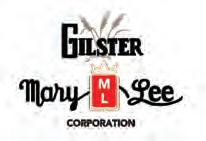

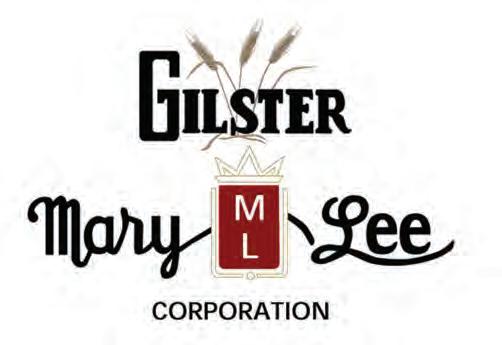
For 130 years Gilster-Mary Lee has been a part of southern Illinois.
We are grateful for our customer and supplier partnerships, the dedication of our team members, and support of the communities that we call home.
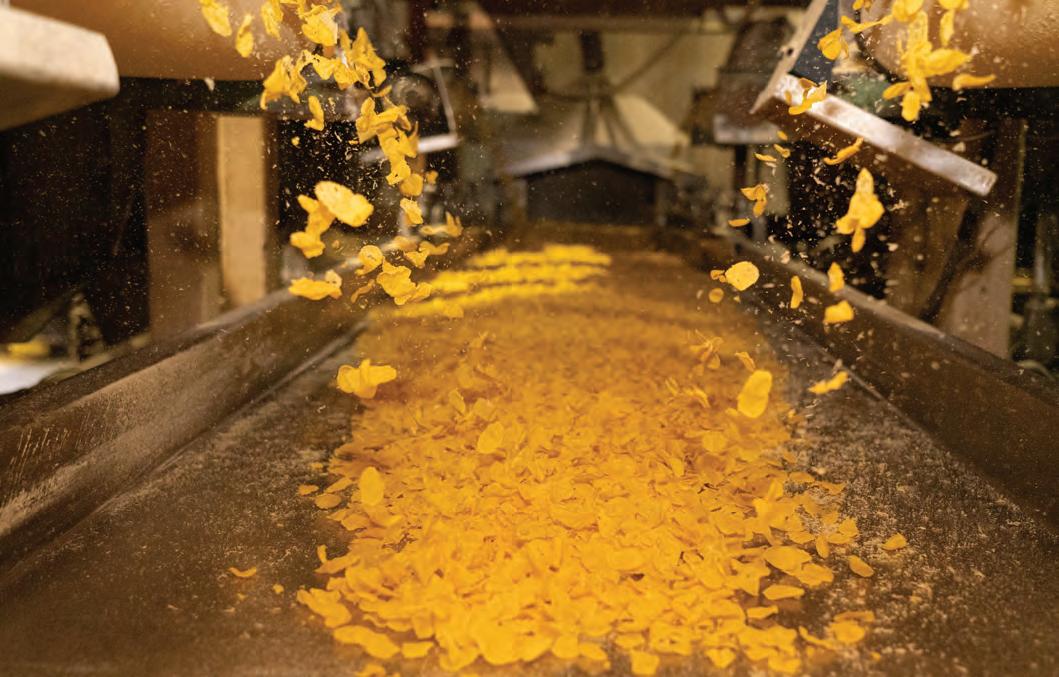
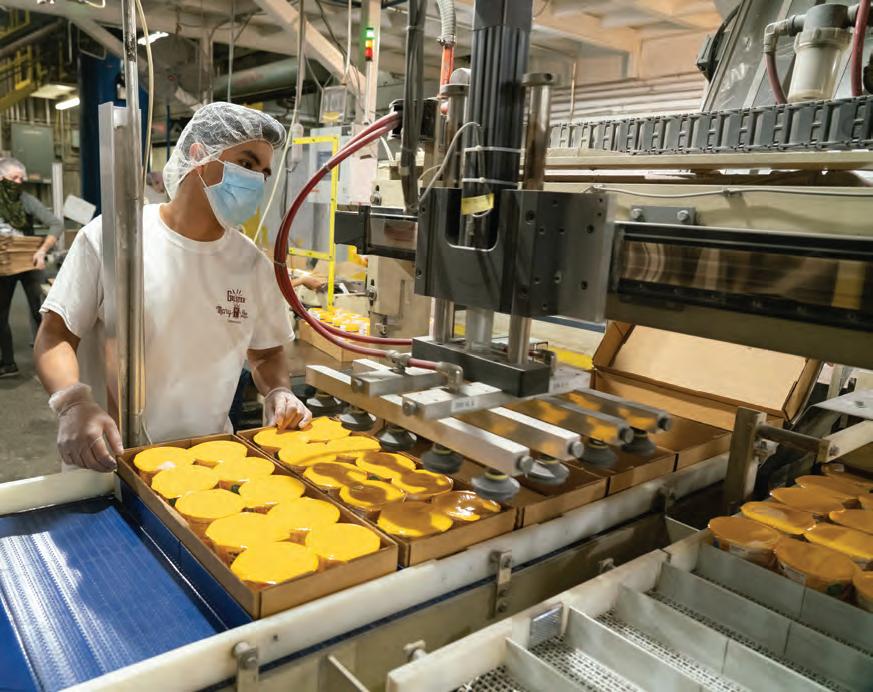
We make peoples’ lives better by providing them high quality, high value food products that they enjoy!
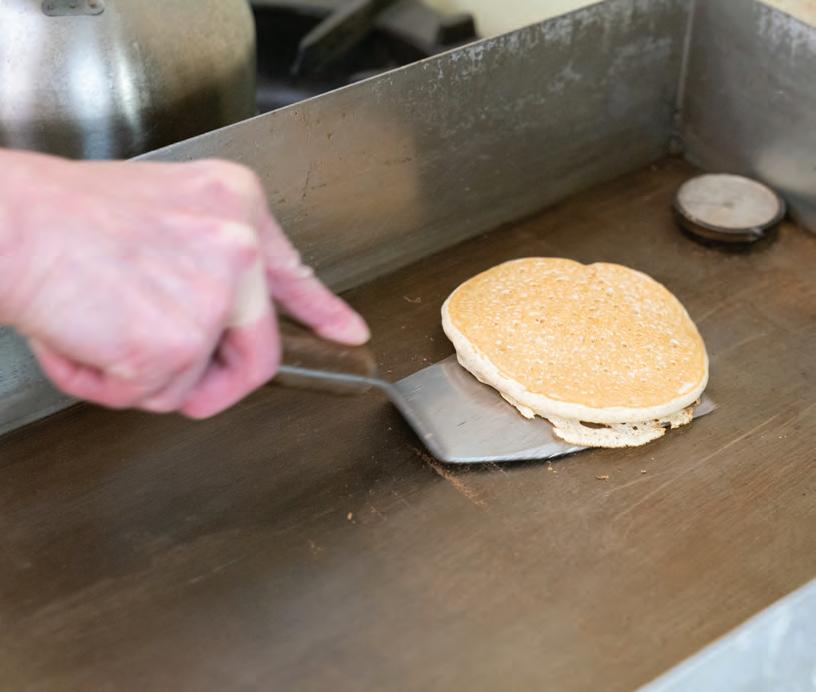

In Southern Illinois, revitalization doesn’t begin with skyscrapers or stadiums—it starts with people. And people need places to call home.
Across the region, communities are recognizing that housing is more than just shelter—it’s a catalyst. From downtown loft conversions and mixed-income developments to affordable new builds and neighborhood reinvestments, housing initiatives are reshaping the future of Southern Illinois, one block at a time.
These efforts are not happening by chance. They’re the result of deliberate planning, creative collaboration, and a shared understanding that a thriving region must have vibrant, livable spaces for everyone—young professionals, growing families, essential workers, and retirees alike. Towns that once saw populations shrink are now welcoming new residents, thanks to forward-thinking strategies that prioritize quality of life, accessibility, and sustainability.
Public-private partnerships, local developers, and community organizations are driving these efforts, often tapping into state and federal programs to unlock funding. At the same time, housing solutions are being linked to workforce development, infrastructure upgrades, and downtown revitalization efforts, creating a ripple effect of growth.
We explore the stories behind the blueprints—how leaders and residents alike are reimagining what it means to live, work, and stay in Southern Illinois. These housing efforts aren’t just about structures; they’re about stability, opportunity, and pride of place. When you build homes, you build communities. And when you build communities, you lay the foundation for a stronger, more resilient region—one where people don’t just pass through, but choose to plant roots and grow.

It all started with a door—bright yellow, unexpected, and unforgettable.

When Anthony and Padra Franks returned to Southern Illinois from Georgia in 2016, their first renovation project back home included a yellow door. It wasn’t planned as a brand or a symbol. But as neighbors and passersby began to ask about it—drawn to its vibrancy and charm—it became clear that the yellow door represented something more. It was a spark. A conversation starter. A sign of possibility.
That single door gave rise to Yellow Door Builders, a communityfocused development company born not just of a love for architecture and real estate, but of a deep-rooted mission: to bring life back into the neighborhoods they grew up in.
Anthony and Padra aren’t new to construction—they’ve been in real estate since 2014 and began with renovation work before moving into new construction. But Yellow Door Builders is more than a business venture; it’s a personal calling. With family ties in construction—uncles and a father who were builders, carpenters, and craftsmen, Anthony grew up immersed in the language of blueprints, sawdust, and site visits.
When the couple returned to Marion, they noticed something troubling: the neighborhoods they loved were changing. Older homes were being torn down, but nothing was replacing them. Long-time neighbors were moving on, and with them, the pulse of the community seemed to fade.
“I watched the neighborhood go from being full of life to being forgotten,” Anthony recalled. “We wanted to be the ones to bring it back. Not just with buildings—but with neighbors.”
Yellow Door Builders began constructing single-family homes— modern, stylish, and affordable—with a goal of not only reshaping the local housing landscape but reigniting the spirit of community.
At the heart of Yellow Door’s mission is a belief that homeownership creates roots. Unlike multifamily units or short-term rentals, single-family homes are more likely to be occupied for years—if not generations. And when people stay, communities flourish.
“We wanted to put people in homes where they’d be for seven years, ten years. Where kids would grow up next door to each other. Where people wave from porches and share garden tools,” Anthony said.
Their approach is both innovative and deeply nostalgic: creating beautiful, modern homes that still feel like home. From sleek lines and contemporary design to community-forward layouts, every house is designed with the future in mind—and with pride of ownership at its core.
But Yellow Door’s work extends far beyond housing. In fact, Padra shares that one of their most impactful efforts had nothing to do with drywall or foundations at all.
In the heart of Anthony’s childhood neighborhood, Yellow Door led a community spruce-up project to transform a neglected basketball court. With local teen artist Maddie Deiters leading the design, more than 50 community members came together for 13 hours of painting, cleaning, and beautifying. The court has since become a hub for pick-up games, youth practices, and neighborhood events, a symbol of what’s possible when people believe in their communities.
“There’s nothing like seeing kids from the neighborhood walk past our homes and say, ‘One day, I want to live there,’” Anthony said. “But even more than that—now they say, ‘Maybe I could build one of these.’ That’s the legacy we want to leave.”
In today’s housing climate, affordability is often the biggest barrier to homeownership. Yellow Door Builders is tackling that challenge head-on.
Anthony personally designs each home—inside and out—selecting materials and floorplans that balance cost and style. From creative use of truss systems to strategic placement of high-impact design elements, every detail is intentional.
“It’s about maximizing every dollar without sacrificing beauty,” they said. “We want people to walk into a home and feel like they got more than they expected—without breaking the bank.”
The team is currently exploring tiny homes, smaller footprint designs, and mixed-use projects that blend residential and commercial space, aimed at expanding access and building up Southern Illinois’ urban cores.
Naturally, revitalization brings its share of challenges, especially when introducing something new and different. Innovative homes and modern designs don’t always fit neatly into existing systems, which can create unexpected obstacles during the development process.
Rather than being discouraged, Yellow Door sees these challenges as opportunities to improve the broader landscape. By engaging with local partners, realtors, builders, and community leaders—they’re helping to shape more responsive, inclusive systems that support growth and creativity across Southern Illinois.
Yellow Door Builders has already made their mark in Marion, Carterville, Carbondale, Murphysboro, and even along Lake of Egypt. Their impact is visible—modern homes, renewed community pride, and kids dreaming bigger.
And they’re not done.
Next steps include more affordable custom builds, the expansion of their business Yummys Venue, additional neighborhood infill projects, and larger-scale mixed-use developments that can reshape town centers from the inside out.
“We think Southern Illinois is a hidden gem,” they said. “We’ve got nature, affordability, potential—it’s time to show people what’s behind the yellow door.”

In Sparta, Illinois—a small town with a strong sense of place and purpose—a new vision for community growth is taking root. Fueled by determination, strategy, and a lot of long-term thinking, the City of Sparta is launching a bold housing initiative that promises to reshape the local landscape and expand opportunities for current and future residents alike.
At the heart of this effort is a city-led development that will bring up to 50 new homes to a thoughtfully planned subdivision just east of the Sparta Country Club. City leaders originally explored a partnership for private land development nearby, but as the concept evolved, attention turned to city-owned property where the vision could move forward with greater speed and flexibility. The result: a plan that’s both ambitious and attainable.
“We saw an opportunity to take charge of our own future,” said Corey Rheinecker, Sparta’s City Administrator and a driving force behind the initiative. “Housing shortages aren’t unique to Sparta, but we wanted to be proactive—and create solutions that make homeownership more accessible while also sparking broader growth.”
Here’s how it works: the city is handling all infrastructure—roads, water, sewer, and storm drainage—while private developers
build the homes. To encourage buyers, lots are being offered for just $2,500, with that amount reimbursed once the home is completed and inspected. That rebate turns the lot into instant equity, helping buyers secure loans with lower upfront costs.
And that’s just the beginning. The subdivision lies within a newly created Tax Increment Financing (TIF) district, and city officials are working to expand the regional Enterprise Zone to include the development. That would mean added benefits, like sales tax exemptions on construction materials and potential interest rate reductions on home loans during the first five years.
“The goal is to keep the average new home around $275,000,” Rheinecker said. “That’s a solid, attainable number in today’s market— and these homes will be built with quality and modern features in mind.”
Each lot will be sold individually to qualified buyers through local banks, ensuring responsible growth and encouraging homeownership over speculation. The lots range between a third and half an acre—large enough for comfort but designed to foster community.
What makes this initiative especially unique is how seamlessly it ties into Sparta’s ongoing
investment in quality of life. The new neighborhood sits near the city park, and future plans include walking trails, updated recreational facilities, and enhanced green space— features that appeal to families, professionals, and remote workers seeking a small-town atmosphere with modern amenities.
“Over the last several years, we’ve invested heavily in infrastructure—from a new sewer plant to road upgrades to downtown revitalization,” Rheinecker said. “This housing project is the next step. It’s about creating a future where people want to live, work, and put down roots.”
Construction on infrastructure is expected to begin early next year, with homes breaking ground by late summer or early fall. For Sparta, it marks a significant milestone in a long-term journey—one that’s been quietly gaining momentum since 2015.
“This didn’t happen overnight,” Rheinecker added. “But every move we’ve made has been intentional. We’ve laid the foundation, and now we’re ready to grow. This is about more than homes—it’s about building hope and a stronger future for Sparta.”
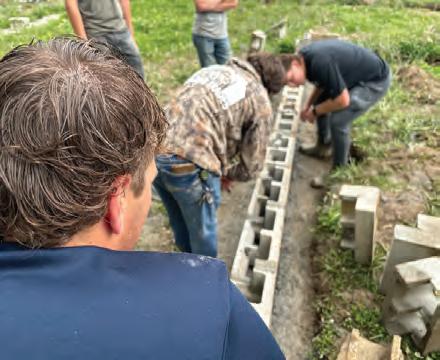

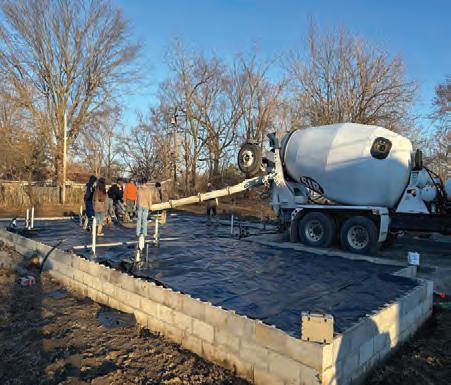
While much of the nation steers young people toward college degrees, Marion High School is charting a parallel path— one paved with concrete, power tools, and purpose. At the center of it all is Lester James, who leads the school’s Building Trades Program, a hands-on initiative giving students real-world experience in construction while helping revitalize housing in Southern Illinois.
The program, which has roots going back over 60 years, is among a small handful of high school trade programs in the state still building actual homes. James, himself a graduate of the program in the 1980s, stepped into the role in 2012 and has since been a driving force behind its evolution. “It’s a dream come true,” he says. “I get to teach kids life skills they’ll use forever—whether they go into the trades or not.”
In today’s evolving workforce landscape, James believes in offering students multiple career pathways—whether that means college, trades, or something in between. For some, hands-on learning leads directly to well-paying, stable careers without the burden of long academic timelines. One standout story is about Drew, a student whose mother was initially reluctant to let him enroll in the trades program, prioritizing college-prep courses instead. But after some convincing, Drew joined the class, discovered a passion for electrical work, and today is a successful journeyman electrician with a fulfilling career. “She tells me now how grateful she is he took that class,” James shares. “It changed his future.”
But the program isn’t just changing students’ lives, it’s helping reshape Marion’s Midway Court neighborhood. Through a partnership with the City of Marion, students are building new homes on lots where derelict structures once stood. One senior even designed two of the homes currently under construction, which were approved by both the school board and city council.
This isn’t theory. It’s transformation. Students graduate with not only job-ready skills, but a deeper understanding of housing, affordability, and community development. They know what it takes to build—and buy—a home.
James’ passion is contagious. His influence has already sparked new trades programs in Carterville and Harrisburg. “The city provides the lots,” he says. “We provide the future workforce.”
The blueprint is simple: teach kids to build homes, and they’ll help build communities.

on Marion High School’s Building Trades Program,
Marion High School Trades Program Equips Students for Real-World Careers While Rebuilding a Community visit https://www.marionunit2.org/Page/1505 FOR MORE


Affordable housing is a pressing need in Southern Illinois, just as it is across the nation. This past summer, Du Quoin scored a major win by securing a new senior apartment community that will help meet that demand. The Blackstone, a 55+ senior living development, is set to open in Fall 2027 with 36 total units—six of them fully ADA accessible—designed to deliver high-quality, agefriendly housing in the heart of the region. It’s a project that’s been in the works for the City of Du Quoin for two years.
“All of these units will be affordable for households earning under $46,800 per year, which is a tremendous benefit for our community,” said Du Quoin Mayor Josh Downs. “This ensures that a wide range of residents will have access to quality housing.” Residents will enjoy amenities such as 16 bicycle parking spaces, a community room, fitness center, community garden, and in-unit laundry facilities—all paired with modern, energy-efficient appliances and HVAC systems.
“The
Low-Income Housing Tax Credit is the most powerful tool we have to create affordable homes for working parents, for children who need a safe place to do their homework, and everyone who feels the crunch as rents continue to outpace wages.
IHDA Executive Director Kristin Faust
The project, led by North Arrow Partners, is being made possible through nearly $1.5 million in federal Low-Income Housing Tax Credits (LIHTC) awarded by the Illinois Housing Development Authority (IHDA). “The Low-Income Housing Tax Credit is the most powerful tool we have to create affordable homes for working parents, for children who need a safe place to do their homework, and everyone who feels the crunch as rents continue to outpace wages,” explained IHDA Executive Director Kristin Faust.
The announcement has already sparked interest. “Within the first day or two, I heard from more than a dozen people who are looking for exactly this type of housing—something attractive, affordable, and maintenance-free,” Mayor Downs noted. “Many have lost a spouse or are single for other reasons, and they want a place that meets their needs without the burdens of upkeep.”
For Du Quoin, the benefits extend beyond new construction. As older residents move from well-maintained homes into modern apartments like The Blackstone, those homes—often in excellent condition and located in desirable neighborhoods—become available to younger families. This natural turnover helps meet demand for family-sized housing while strengthening neighborhoods with new energy, long-term investment, and school-aged children. The result is a win-win for the city: improved housing options for seniors and fresh opportunities for families, all contributing to the vitality and economic health of the community.

Back to the Strip: SIU Alumni Reimagine Hangar 9 with Big Vision and a Little Bit of Grit

For many, college is a chapter. For Southern Illinois University alumni Scott Moller and Andrew Perlmutter, it’s the foundation of a lifelong connection— one that has now inspired them to return to Carbondale and breathe new life into a local legend: Hangar 9.
With successful careers in marketing, branding, and business development under their belts, the two friends are teaming up to reopen and reimagine the iconic music venue and bar—not just as a throwback to Carbondale’s heyday, but as a vibrant, inclusive space that reflects the evolving heartbeat of the community.
“I came to SIU and left a different person,” says Scott. “I worked two or three jobs each semester—selling shoes, working at the radio station, doing concert promotions. It gave me confidence and real-world experience. Carbondale was transformational.”
Andrew echoes that sentiment. “I originally picked SIU because it was known as a party school,” he laughs. “But what really stuck with me was the community. Playing rugby with the SIU team gave me lifelong friends and a reason to come back every year.”
Their journeys may have started with ticket sales and rugby tackles, but both found lasting value in the region’s welcoming, diverse atmosphere. “Carbondale lets you be yourself,” Scott adds. “It’s a place where everyone belongs. That’s not just a college town vibe—it’s a culture.”
When Hangar 9 closed its doors, it left more than an empty building—it left a gap in the city’s cultural core. For Scott and Andrew, that simply wouldn’t stand.
“It’s a legacy brand. Everyone in Carbondale has a Hangar 9 story,” says Scott. “We saw an opportunity to preserve its history and evolve it into something new.”
Despite neither having run a bar before, they knew their professional strengths could translate. Both have extensive experience in marketing—Scott consulting for top-tier clients like PlayStation and Lego, and Andrew leading brand growth at Funko. “We knew we could build something special,” says Andrew. “We’re taking risks, yes—but calculated ones. And we’re OK with experimenting.”
The new Hangar 9 will be more than a bar. It’s envisioned as a regional music venue, community gathering spot, and what the duo calls a “third space”—a place outside of home and work where people can connect. Expect a beer garden, early evening live shows, diverse entertainment, and even a full mocktail and NA menu for those who want to socialize without alcohol.
“We’re going to try new things,” says Andrew. “Some might work, some might flop—but we’re all in on making Hangar a place where people want to be.”
If they had any doubts, they were erased the moment the news broke. “We heard from the city manager, the SIU chancellor, and local business owners—all within days,” Scott recalls. “Everyone offered support.”
Bar and restaurant owners on the Strip welcomed them into the fold, offering guidance and encouragement. “It’s not a competition here,” Andrew says. “The mentality is: if one wins, we all win.”
That collaborative spirit extends to the business community, the university, and the city. “Carbondale’s experiencing something unique right now,” says Scott. “There’s a new wave of energy and partnership. The city and university are working together, and you can feel that momentum.”
To other SIU grads or entrepreneurs considering where to plant their next flag, Scott and Andrew have one message: Carbondale is ready.
“The city is pro-business, the university is engaged, and the community is eager for fresh ideas,” says Andrew. “If you’ve been thinking about starting something—now’s the time.”
“We’ve been embraced here,” adds Scott. “This place gave us so much, and now we get to give something back.”
Phase one includes a revamped layout, a wide-open dance floor (no more weird concrete island), and a casual, welcoming beer garden. Music lovers can look forward to regional and national acts, surprise pop-up shows, and earlier events for those of us who like to be in bed before the 10 o’clock news.


Phase two, planned for next summer, will bring a full interior renovation and a major outdoor expansion. “We’re taking our time to learn what people want,” Scott explains. “This is about listening, adapting, and building something sustainable.”
And if you’re wondering—yes, the Cubs vs. Cardinals rivalry still lives on at Hangar 9. “We’ve got the sign up,” Andrew laughs. “It’s part of the charm.”
Whether you’re a longtime local, a curious newcomer, or a Saluki with a story or two of your own, Hangar 9 is getting ready to welcome you home.
Small Town Big Business, a podcast recorded at Ethos at the Citadel, dives deep into the stories behind Southern Illinois’ thriving small businesses and the entrepreneurs driving them. Each episode uncovers how determination, innovation, and community spirit come together to build enterprises that make a big impact—proving that small towns can be powerful centers of business success.
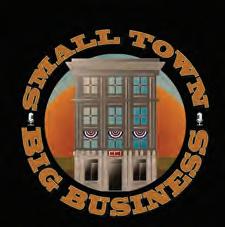

A building with a banner on it
Hosted by Russell Williams, Jennifer Olson, and Deb Barnett at The Citadel, a hub for creativity and collaboration, this podcast brings listeners face-to-face with local leaders, startup founders, and established business owners who share their journeys, challenges, and insights. From manufacturing to agriculture, technology to retail, the series highlights diverse industries that shape the region’s economy.
More than just business stories, Small Town Big Business celebrates the values and ethos that fuel Southern Illinois’ entrepreneurial spirit—resilience, authenticity, and a commitment to community. Whether you’re an aspiring entrepreneur or simply curious about the heart of Southern Illinois business, this podcast offers inspiration, practical advice, and a genuine connection to the region’s economic heartbeat.

https://www.youtube.com/@smalltownbigbusiness or on your favorite podcast platform


For nearly 30 years, HireLevel has been a trusted partner to businesses and job seekers across Southern Illinois—growing from humble beginnings in 1995, when the company started with “a credit card and a prayer,” into a multi-state leader in staffing, payroll, HR, and workforce management solutions. Their longevity comes down to one thing: staying focused on what matters most—customers, community, and people.
The company’s journey has been marked by defining moments, from expanding beyond staffing into comprehensive workforce management, to navigating the 2008 recession and COVID-19. Each challenge reinforced their adaptability and strengthened their commitment to helping clients thrive through shifting business and economic landscapes. Today, HireLevel blends cuttingedge technology with genuine human connection, offering efficient solutions without losing the personal touch.
Southern Illinois has been both the launchpad and the heart of HireLevel’s story. As the region’s employment landscape shifted from manufacturing to a more diverse mix of healthcare, logistics, education, and professional services, HireLevel evolved right alongside it—adding payroll, compliance, HR support, and tech-driven hiring tools. Through it all, they’ve stayed rooted in their mission to change lives and create meaningful opportunities.


Community is woven into everything they do. The “HireLevel Difference,” their monthly charitable giving program, channels support to local causes that matter to clients, employees, and neighbors alike. It’s a legacy of purpose, not just profit.
Even with their expanded footprint, Southern Illinois will always be “home base.” It’s where relationships were forged, trust was built, and lifelong connections formed—many of which still fuel the company’s success today.
For entrepreneurs looking to build something lasting in the region, HireLevel’s advice is simple: use your network, be visible, give back, and stay true to your values. Relationships and resilience are the foundation of lasting success here.
Looking ahead, HireLevel is doubling down on growth—expanding Human Capital Management services, empowering clients to spend less time on paperwork and more time on people, and developing leaders from within. Their next chapter promises to be as impactful as the last three decades, with heart, hustle, and community at its core.
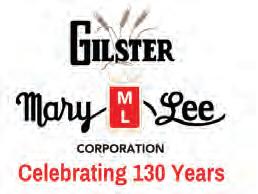


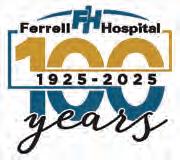
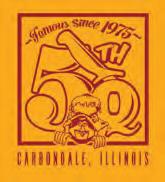






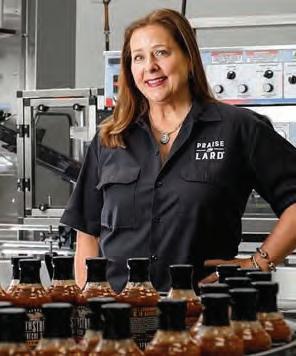
There’s a special kind of magic in Murphysboro—the kind that rises from a smoker, fills the air with the sweet smell of apple wood, and welcomes you home the moment you step inside. That magic belongs to 17th Street Barbecue, a place where history, hospitality, and world-class flavor come together to tell a story that’s been generations in the making.
The roots of this story run deep. Nearly a century ago, Ellis Tavern opened its doors on the very site where 17th Street Barbecue stands today. Known for hamburgers and barbecue sandwiches, it quickly became a neighborhood gathering place. It was here that the tradition of smoke, community, and connection first took hold.
Forty of those 100 years have proudly been as 17th Street Barbecue. When Mike Mills—lovingly remembered as “The Legend”—took over the space, he transformed it into something extraordinary. With his championship-winning
baby back ribs, passion for perfecting the craft, and unmatched hospitality, Mike built more than a restaurant. He created a destination. His leadership and warmth put Murphysboro on the barbecue map and made 17th Street a household name among pitmasters and food lovers across the globe.
From humble tavern beginnings to an internationally recognized powerhouse of barbecue, this location has stood as a cornerstone of community for more than a century. Through every plate of ribs, every shared table, and every story told over a meal, 17th Street continues to carry forward a legacy of resilience, tradition, and family through Mike’s daughter Amy Mills. The story is still unfolding. As 17th Street Barbecue continues its journey, one thing remains clear: this is more than a restaurant. It’s a place where history lives, community gathers, and every bite tells a story.
151

“Our mission is to enhance lives across Southern Illinois by offering high-quality, affordable food products that people love.”
“The roads, the rivers, the railway—and now the runway. With Contour Airlines offering flights, you can be in Chicago, or from Chicago to Southern Illinois, in under an hour. That’s a game changer for our region—whether you’re here for recreation, visiting friends and family, or prospecting for business. When the region thrives, your business thrives too.”
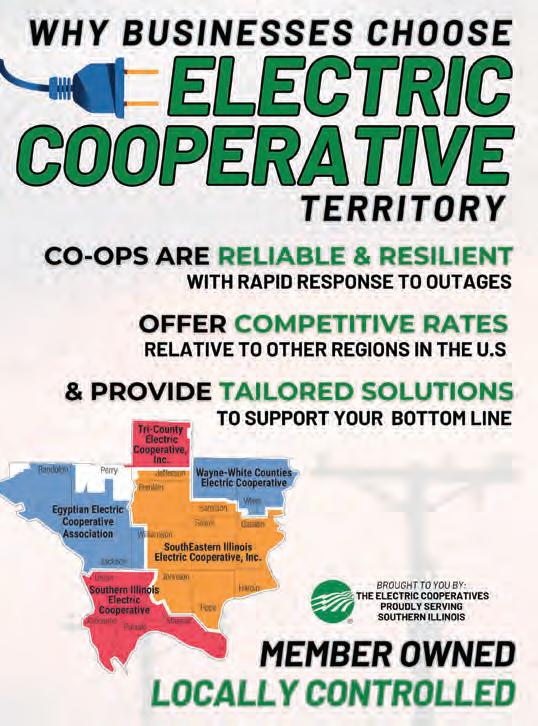
“The quality of life here is really good. We can live really well in Southern Illinois [with a lower cost of living] than in a lot of other places and that is really valuable to people’s happiness.”
“Our region’s enterprises form a unique ecosystem where we thrive on lifting one another up. What’s good for one of us, is good for all of us. We believe in Murphysboro, we believe in Southern Illinois and we want to make our significant investments right here.”

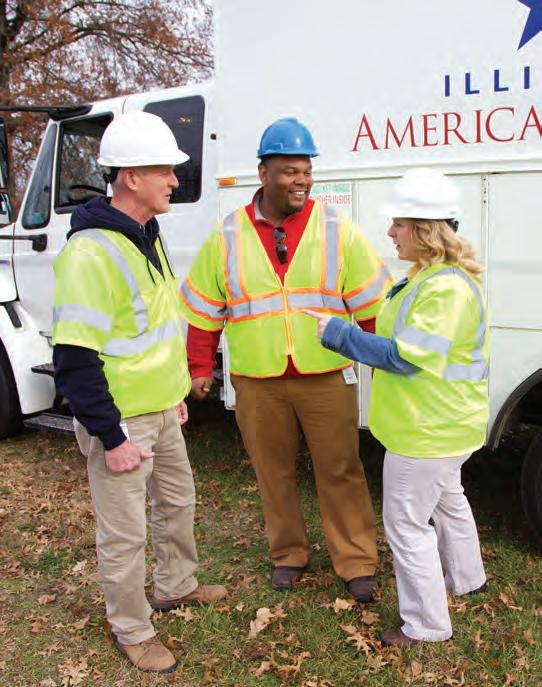
better water systems? We’ve got ideas.
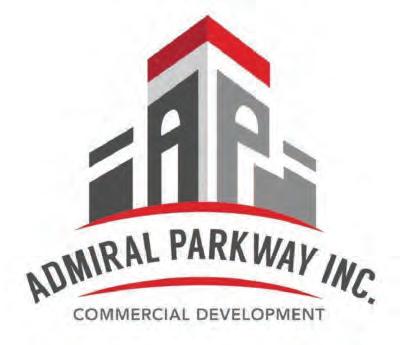



E.T. Simonds
Rend




Barber Murphy
Horner & Shifrin
Illinois



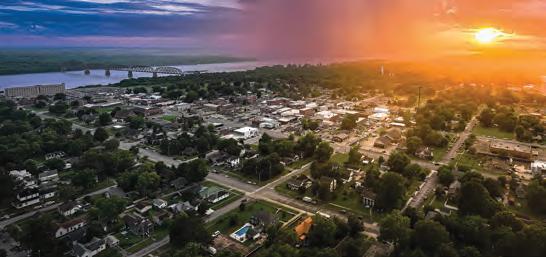


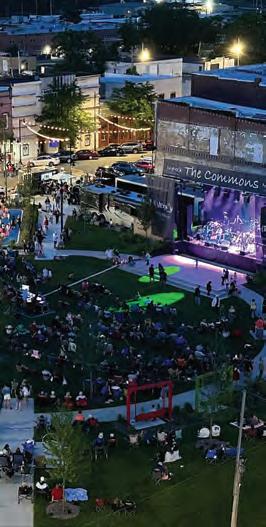









Custom


Webinars and in-person events


Online portal of expert reports, guides, and recordings, available for download at no cost.


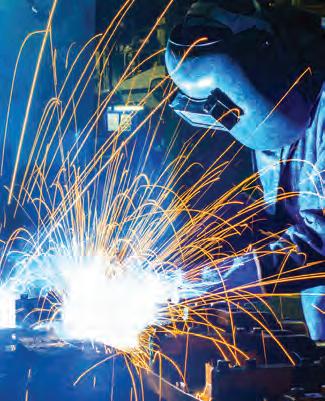







Owned & Headquartered





We’re Neighbors
Community Investment
Customer Support





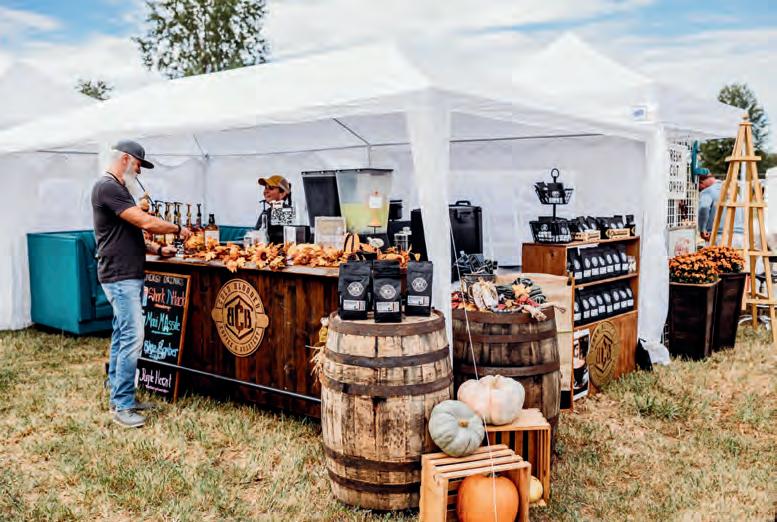
When the air turns crisp and the woodlands and lakes of Crab Orchard National Wildlife Refuge glow in fiery shades of red, orange, and gold, Southern Illinois comes alive.
From pumpkin patches and scenic drives to harvest festivals and vineyard tours, fall is the perfect time to explore the region’s natural beauty and small-town charm. Cozy evenings, breathtaking landscapes, and unforgettable flavors await around every corner.




